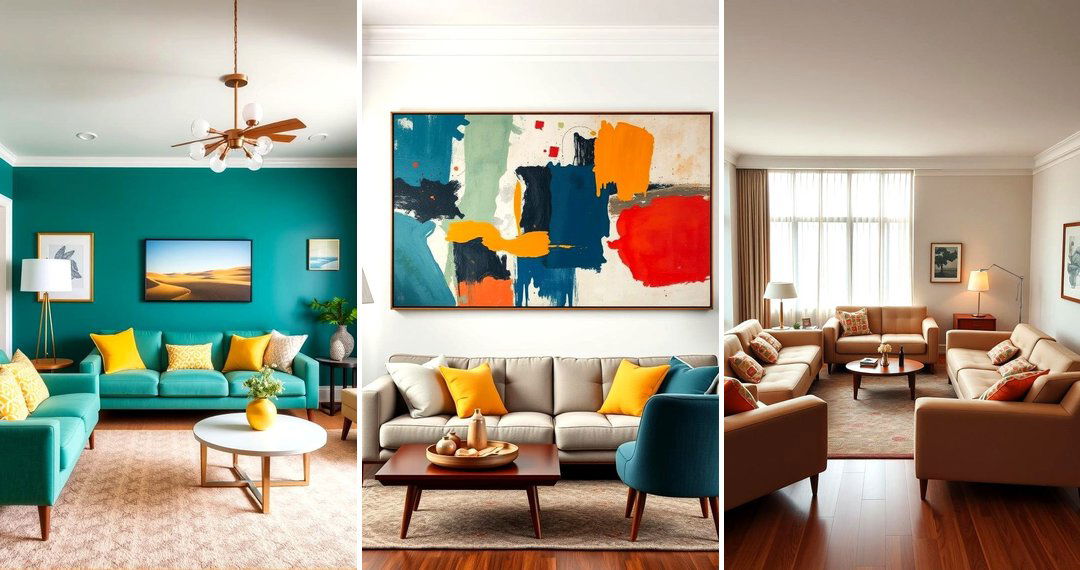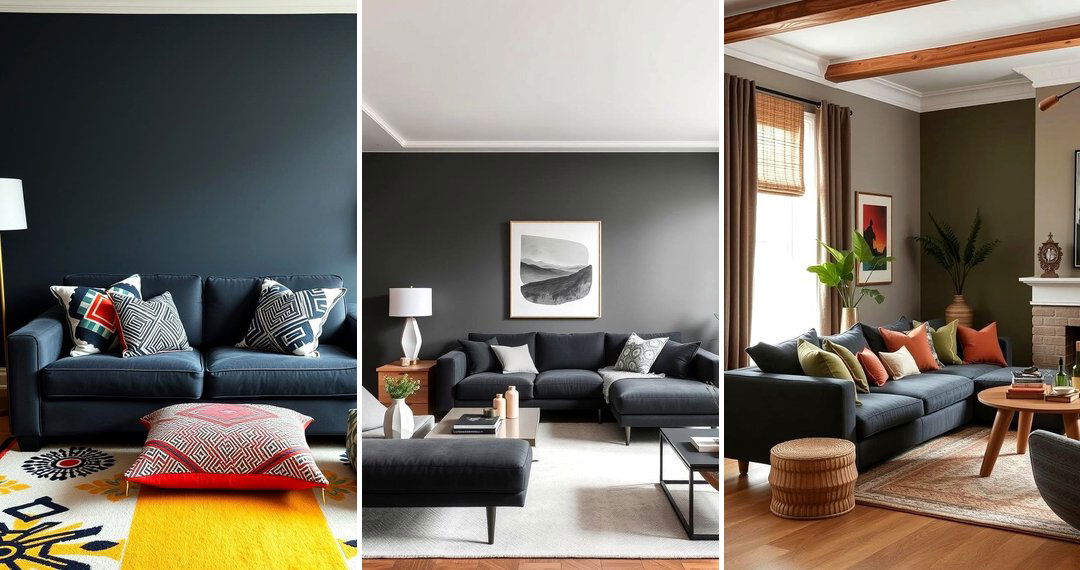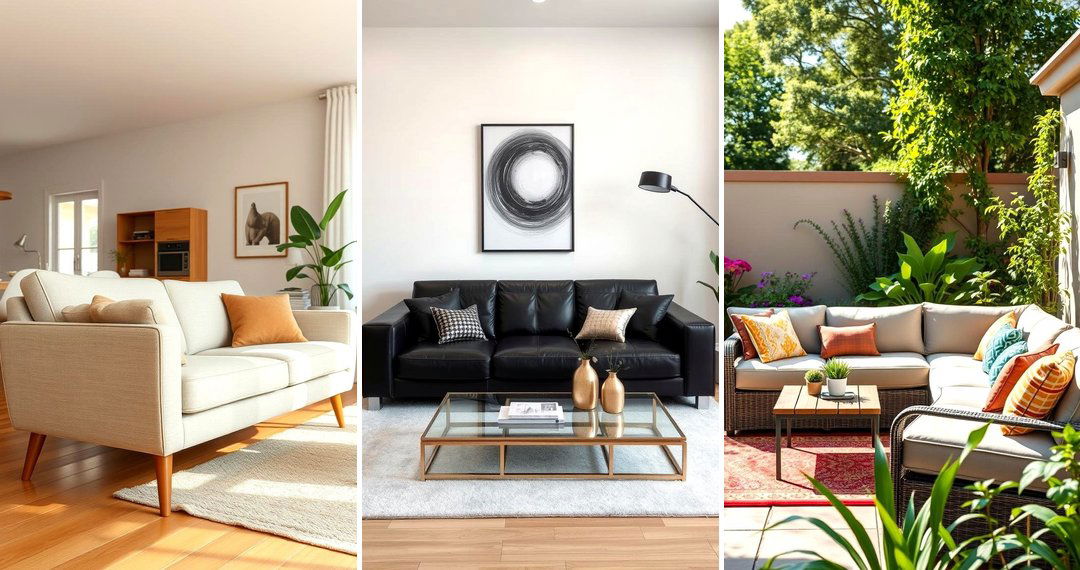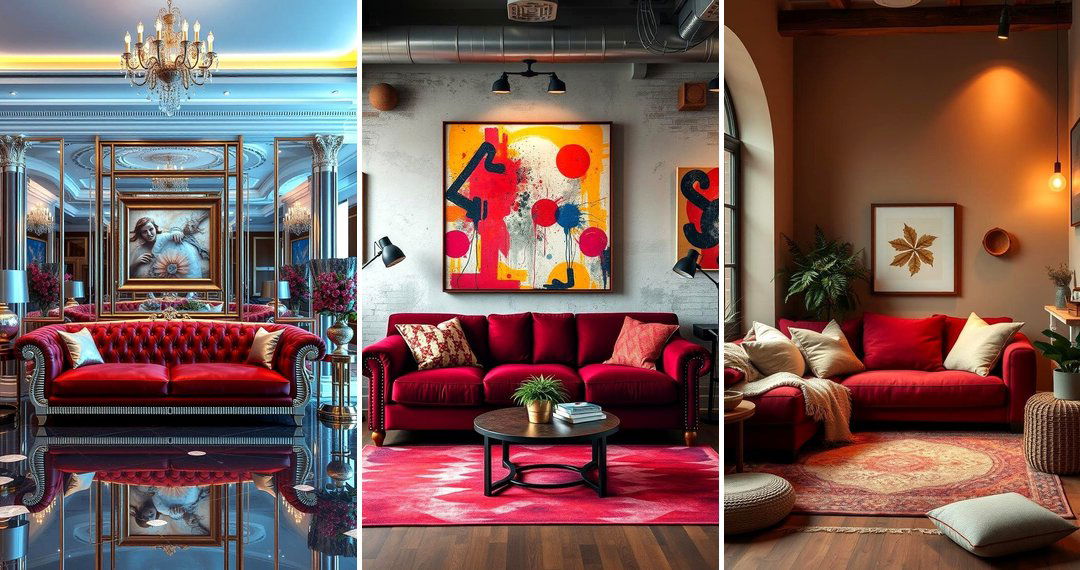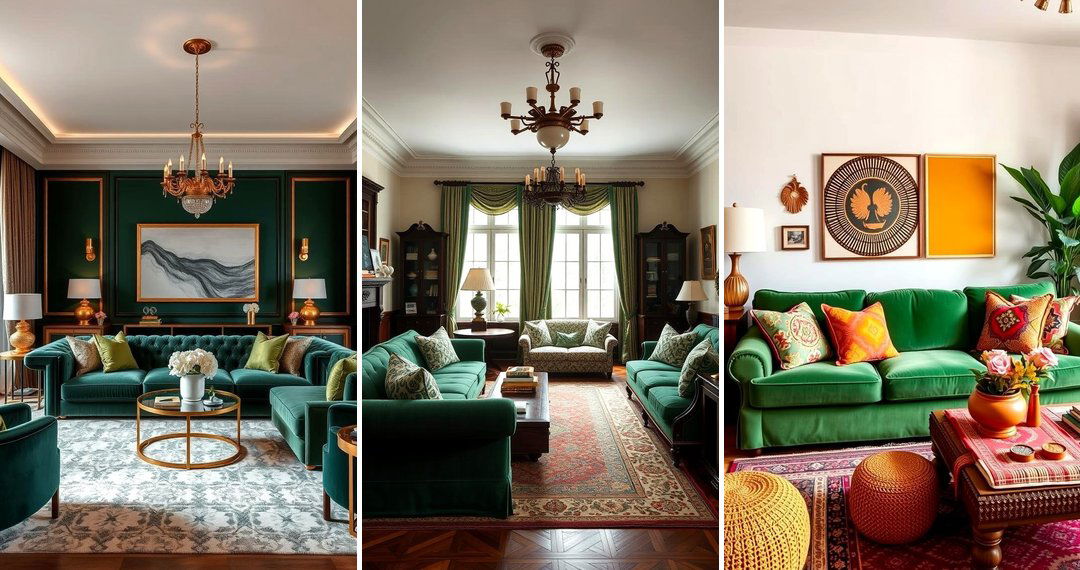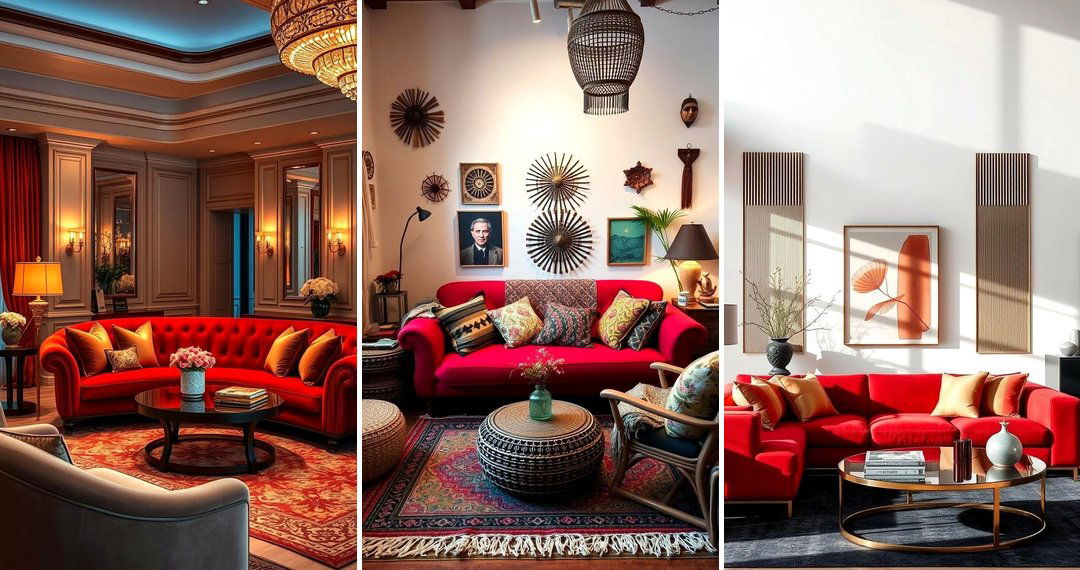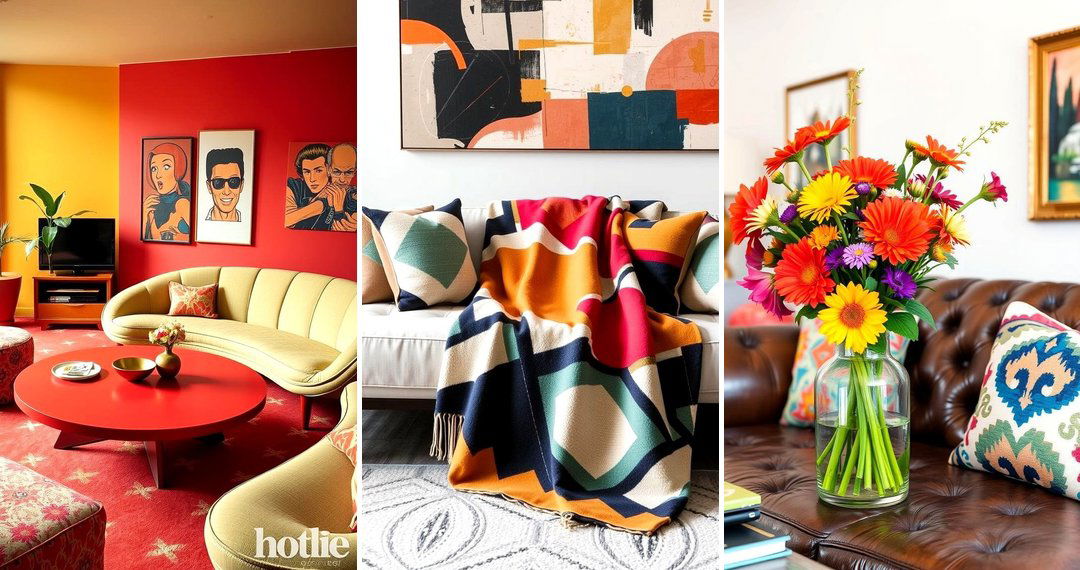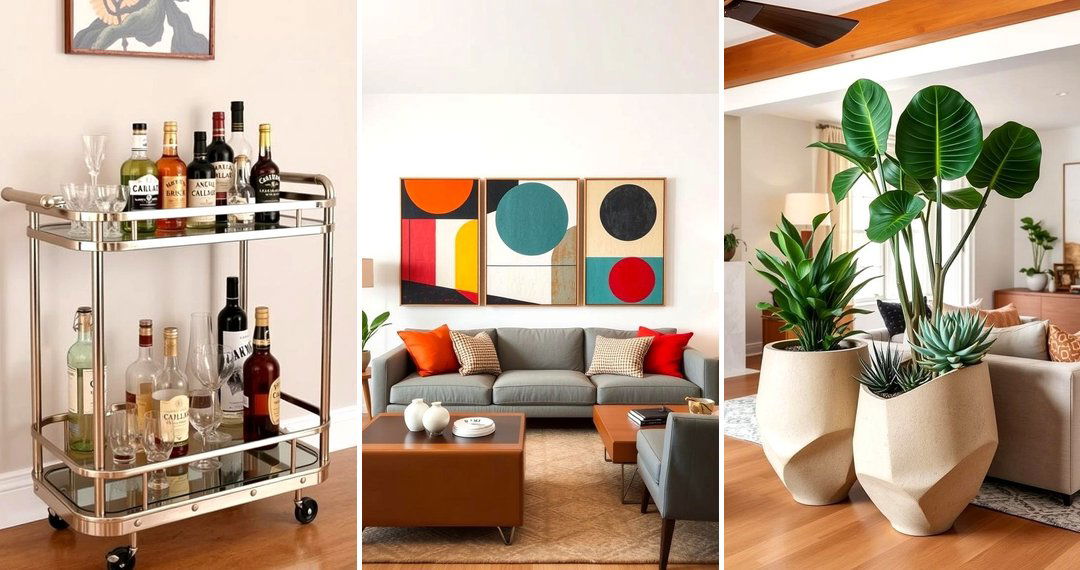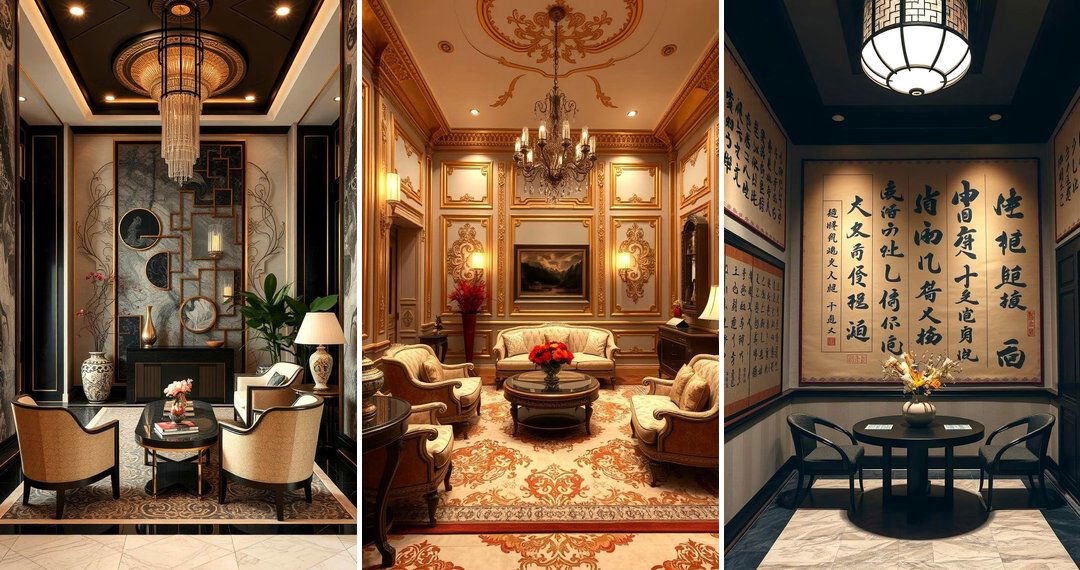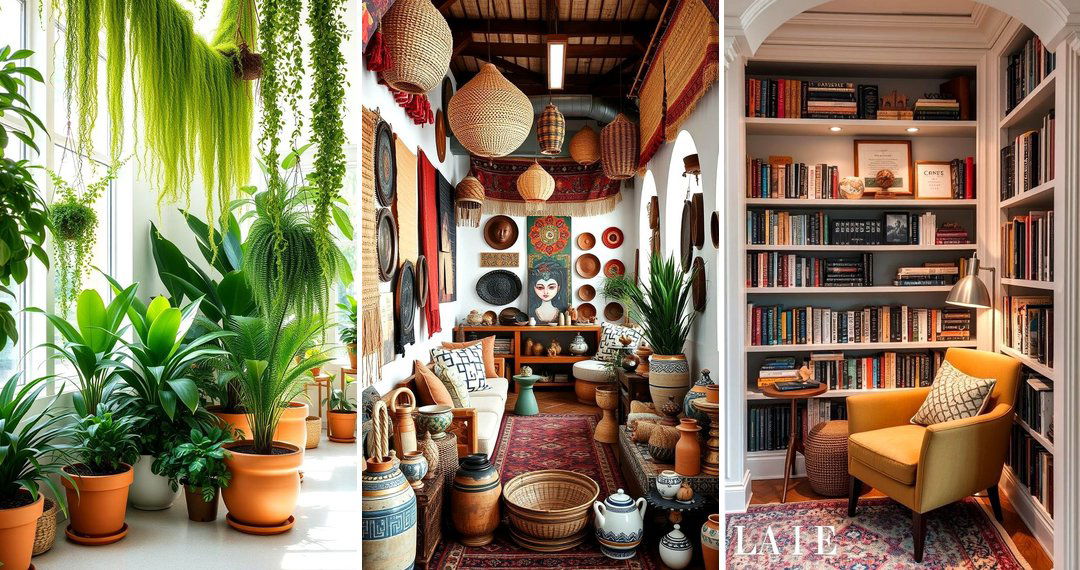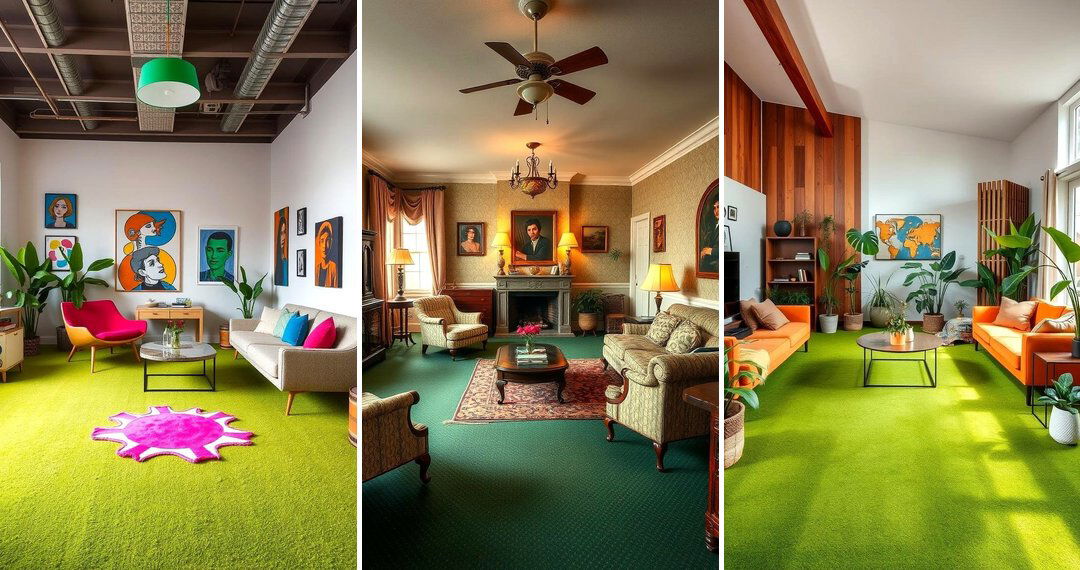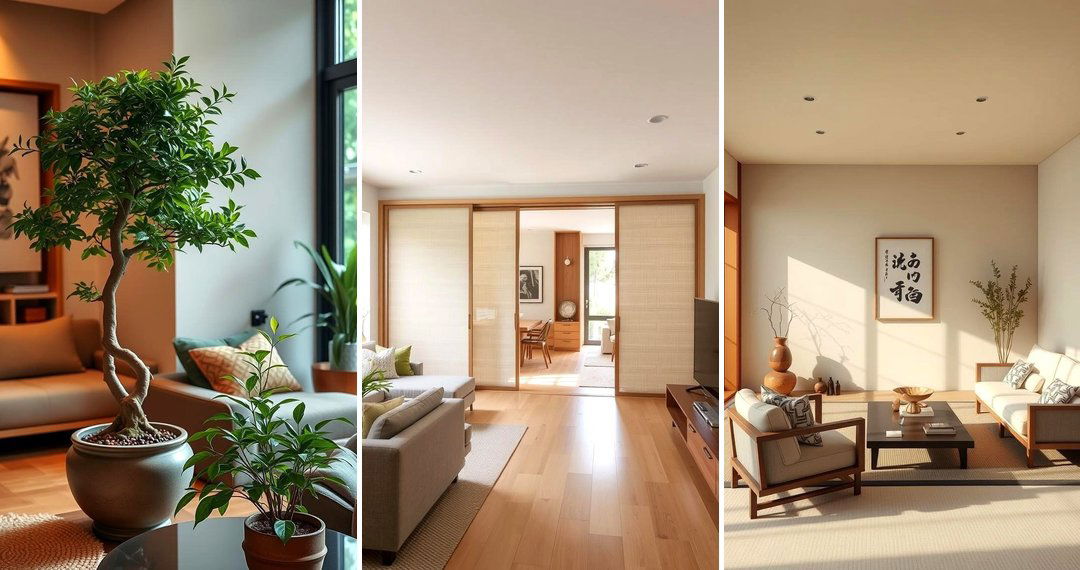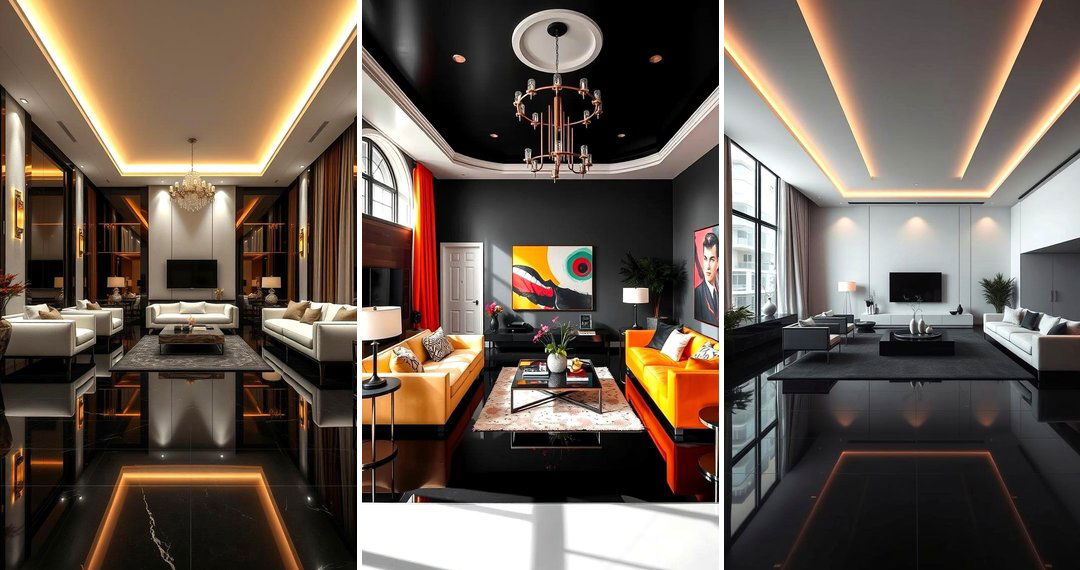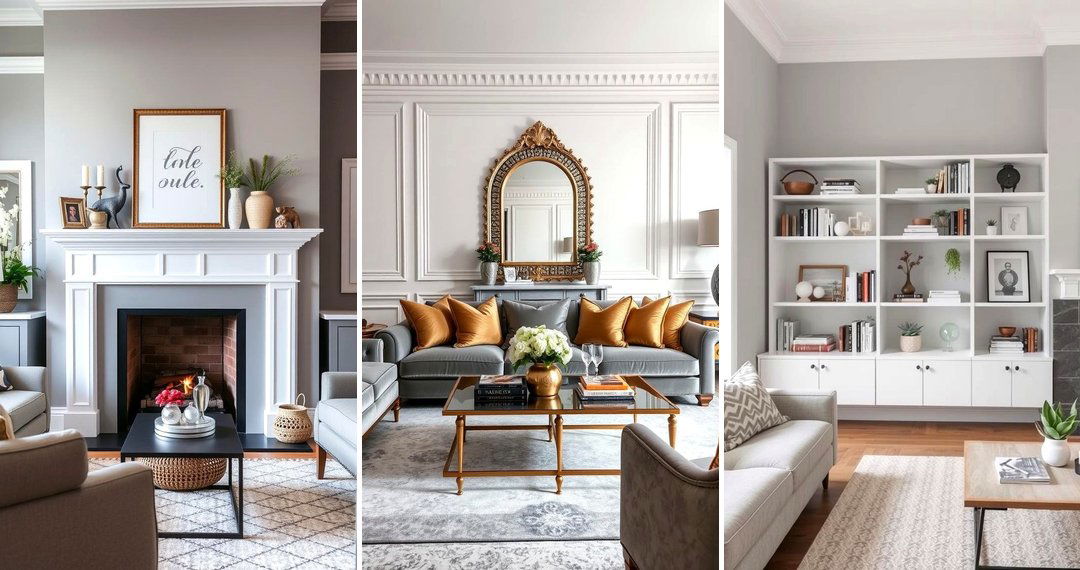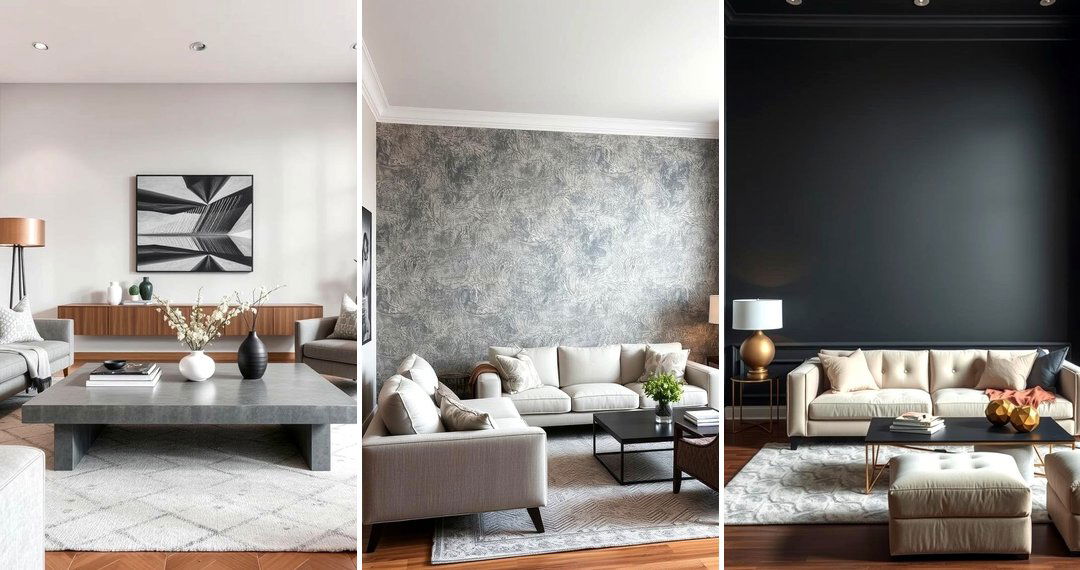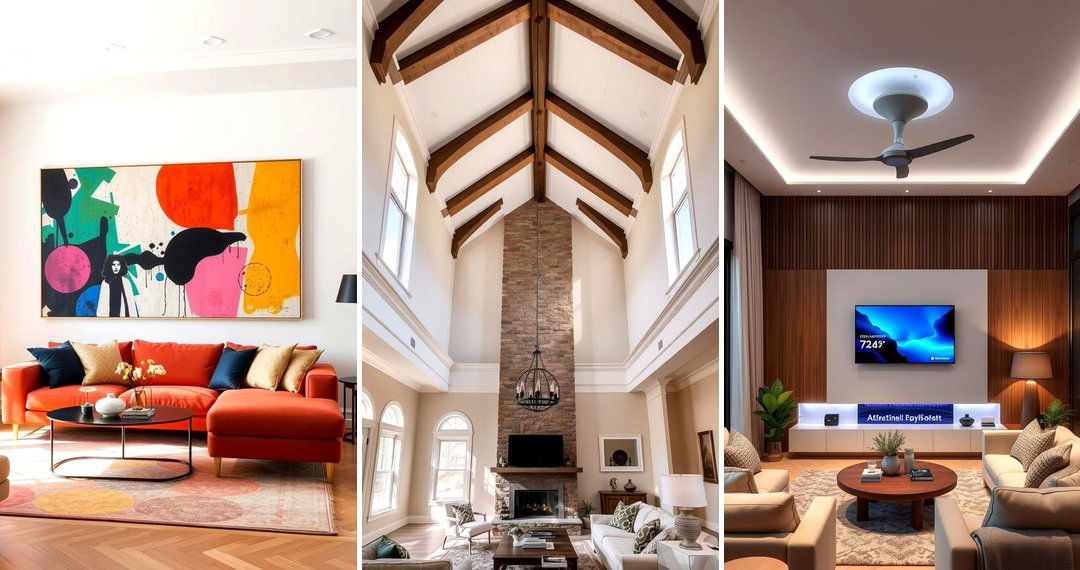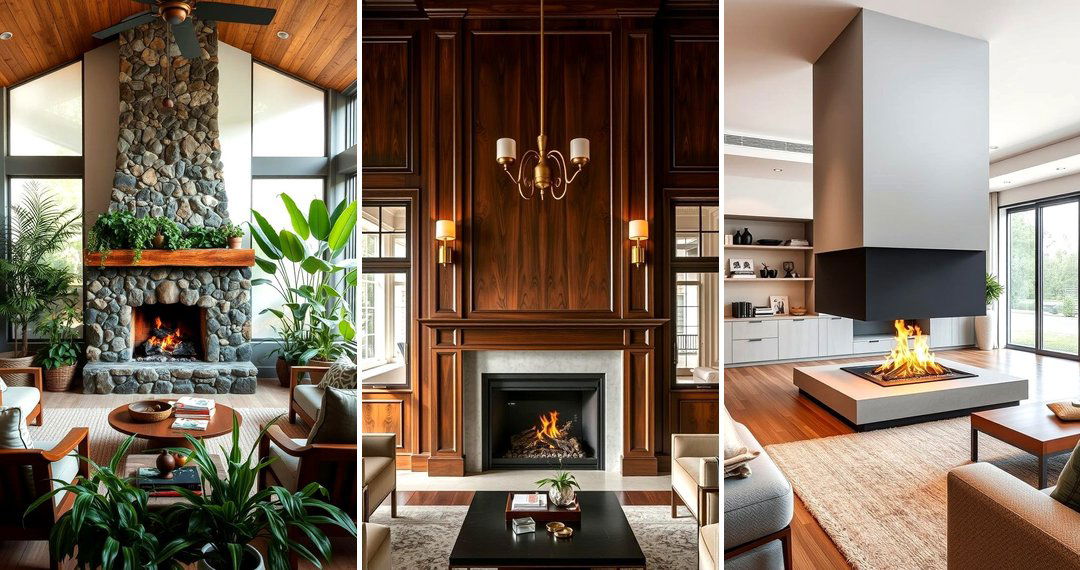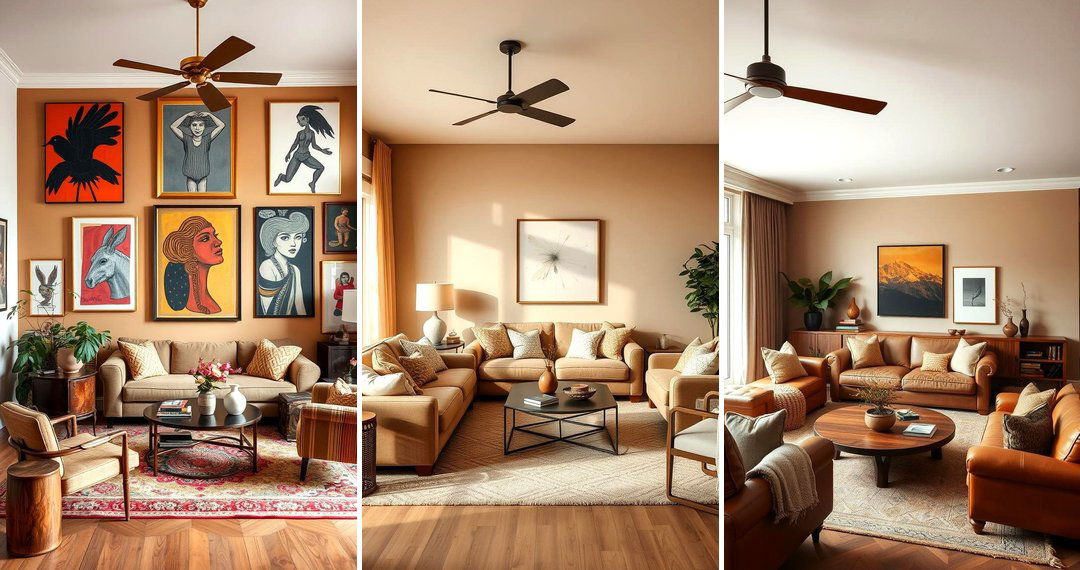Introduction:
The 1950s era was a time of bold design, characterized by vibrant colors, sleek lines, and an unmistakable modern flair. From Mid-Century Modern to more eclectic combinations, the living rooms of this time were a reflection of optimism and innovation. Whether you're looking to bring vintage charm to your space or simply curious about the timeless appeal of 1950s living room ideas, there's a wealth of inspiration to be found. The integration of comfort with cutting-edge style gave the decade its unique appeal, making these ideas relevant even today. Ready to explore how you can recreate this stylish period in your own living room? Let's dive into 27 iconic 1950s living room ideas!

1. Bold Color Schemes with Accent Walls
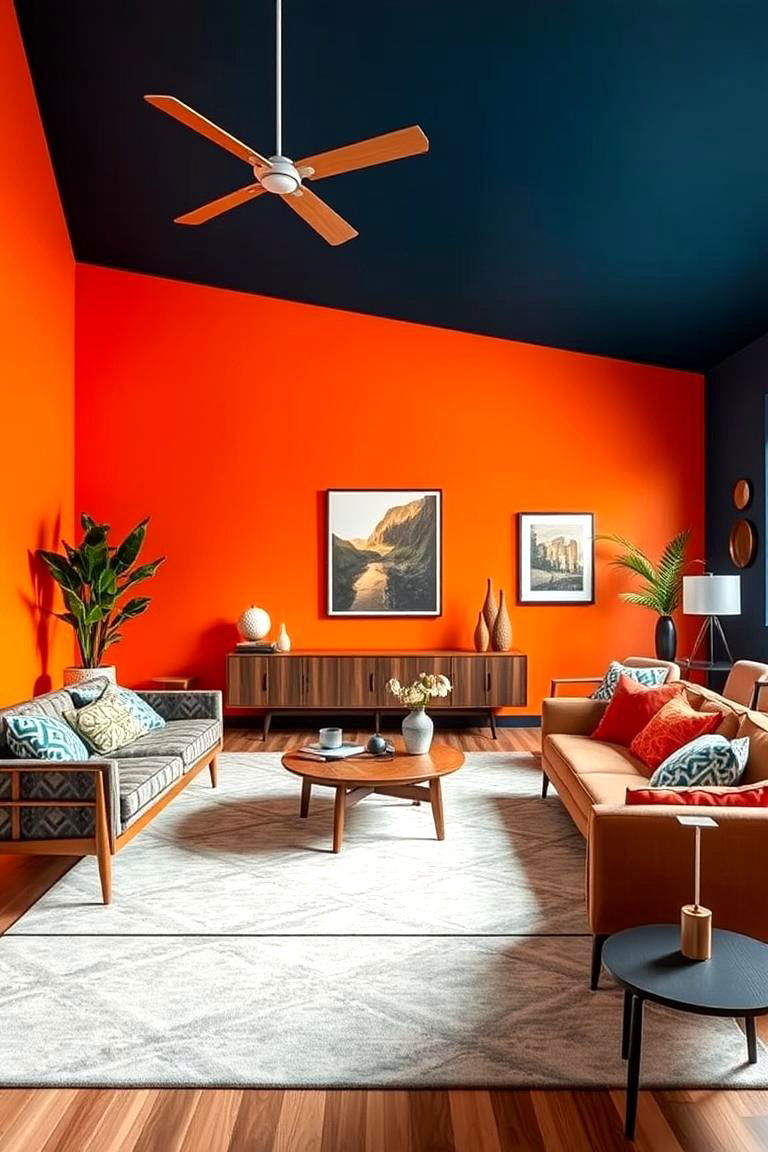
If you love a touch of excitement, the 1950s were all about bold, vibrant color schemes. Bright oranges, deep blues, and mustard yellows were combined with earthy tones like browns and beiges to create a lively atmosphere. Accent walls in these striking hues were popular, offering a powerful contrast against more neutral tones. By mixing color intensity, you can achieve a balanced look that both energizes and grounds the room, creating an inviting yet sophisticated ambiance.
2. Iconic Mid-Century Modern Furniture
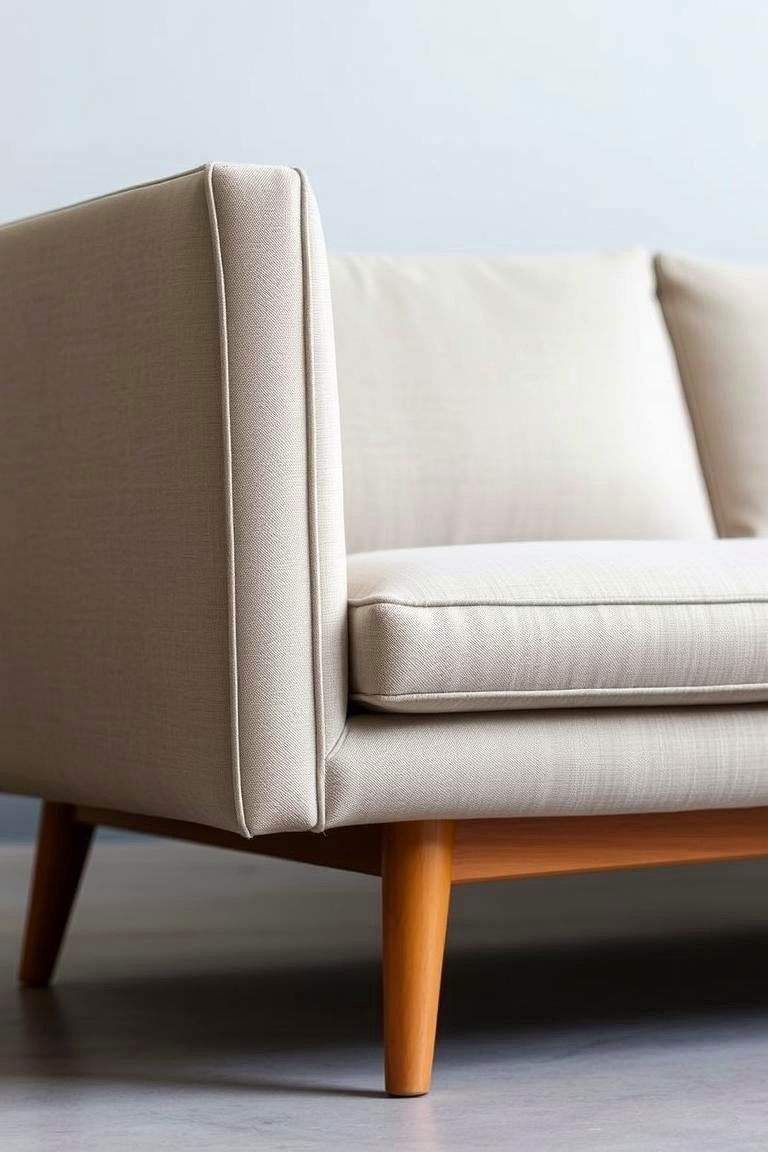
Mid-century modern furniture is the epitome of 1950s style. Think clean lines, functional design, and a focus on simplicity. The iconic Eames lounge chair or the low-profile teak coffee table reflects this era’s design ethos. These pieces weren’t just aesthetically pleasing but also engineered for comfort and durability. A well-chosen Mid-Century Modern piece can become the focal point of your living room, showcasing elegance and practicality.
3. Use of Natural Materials: Wood and Leather
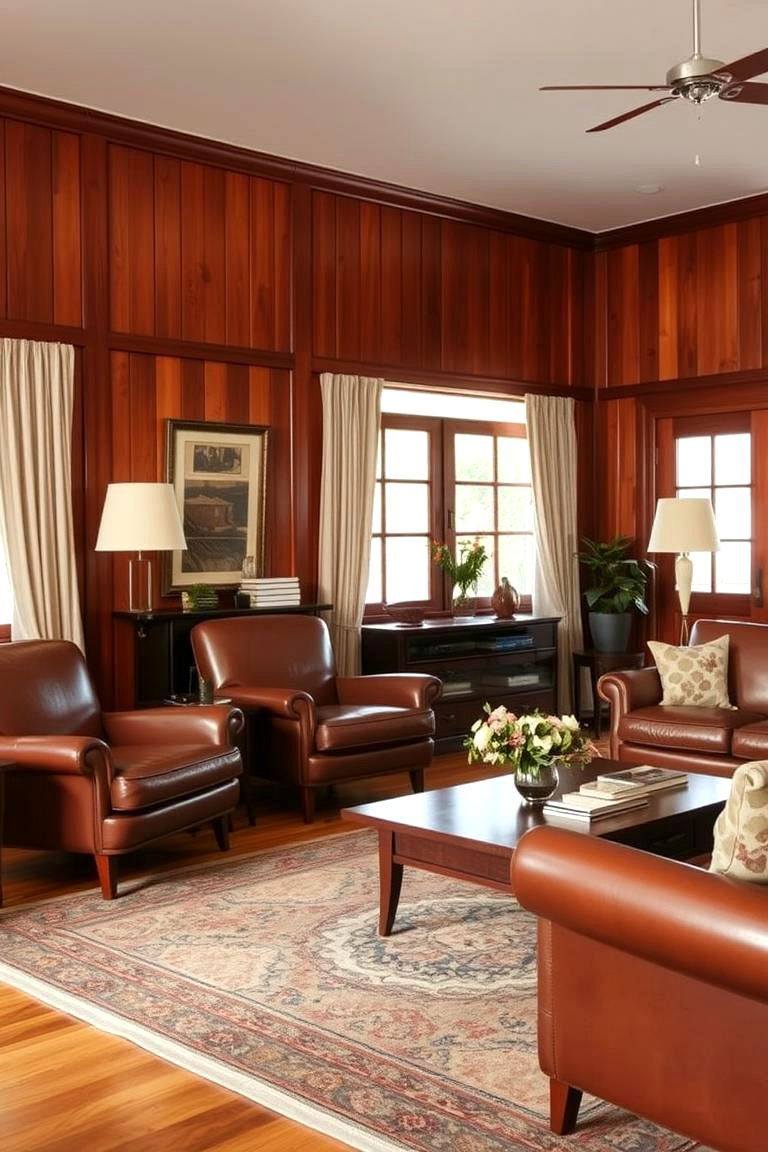
Wood and leather dominated the 1950s living room designs, creating a warm and inviting atmosphere. Whether it's polished walnut furniture, leather armchairs, or wood paneling, these materials added richness to the space. The natural textures not only enhanced the visual appeal but also contributed to a feeling of relaxation. Incorporating these elements into your living room can help you achieve an effortlessly sophisticated yet cozy look.
4. Sleek and Simple Furniture Lines
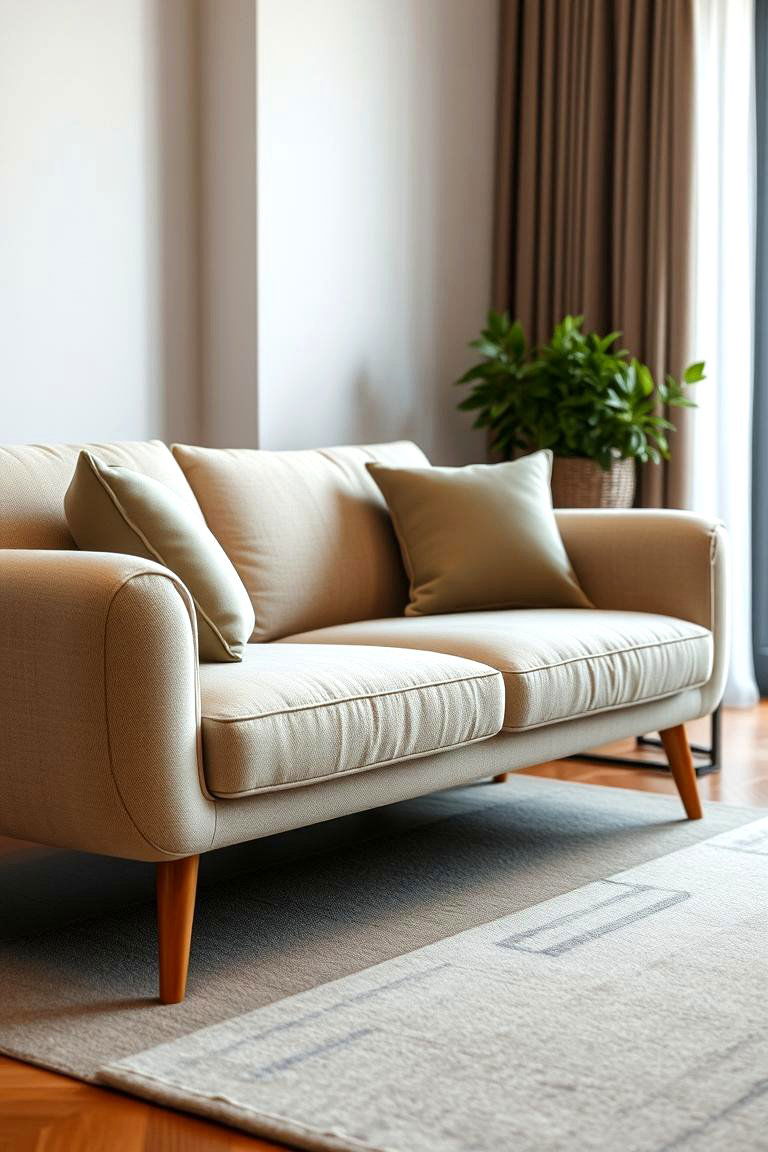
1950s furniture was all about sleek lines and minimalism. Sofas and chairs had slender legs and low profiles, offering a light, airy feel that didn’t overwhelm the space. The focus on simplicity allowed for versatility in the rest of the decor. Choosing furniture with these clean lines will instantly give your living room a refined, open appearance that feels fresh and modern.
5. Geometric Patterns in Rugs and Pillows
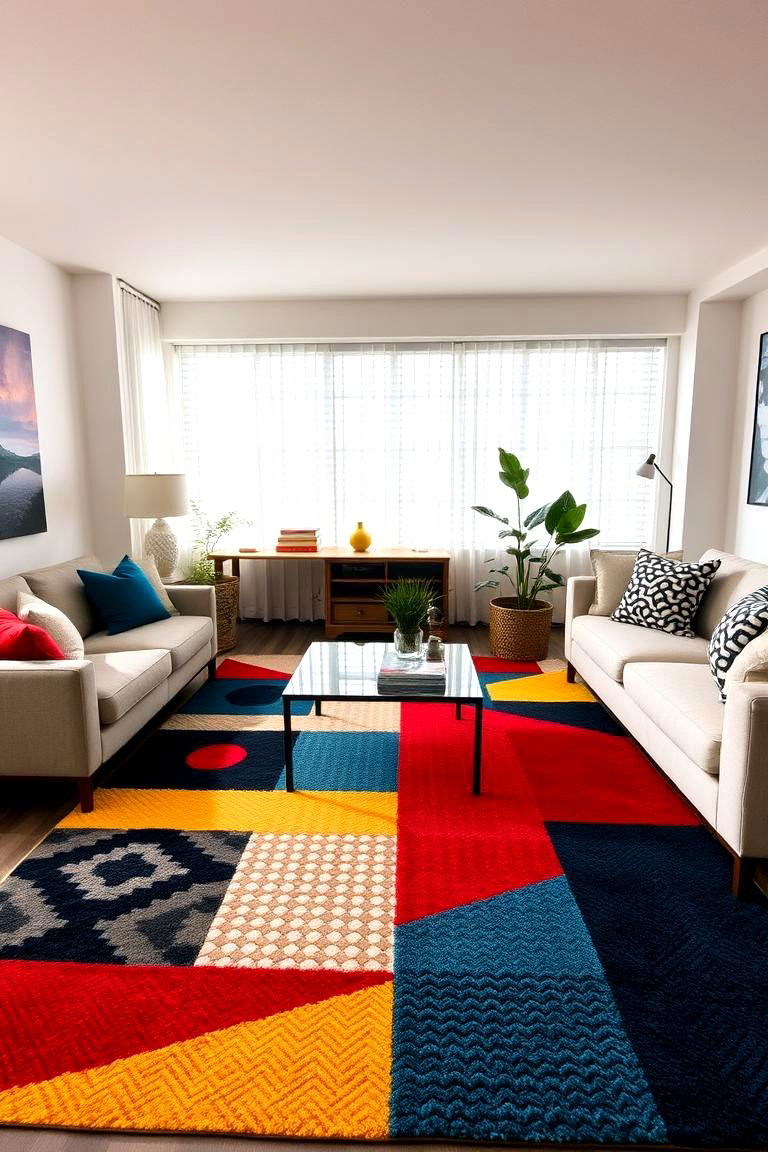
The use of geometric patterns was a hallmark of 1950s design. Abstract shapes and angular patterns appeared in rugs, throw pillows, and textiles, creating a bold contrast against the furniture's clean lines. This design choice helped infuse energy into the room while maintaining harmony. Mixing these patterns with softer, solid-colored elements can achieve a balanced and visually stimulating living room.
6. Statement Lighting with Floor Lamps
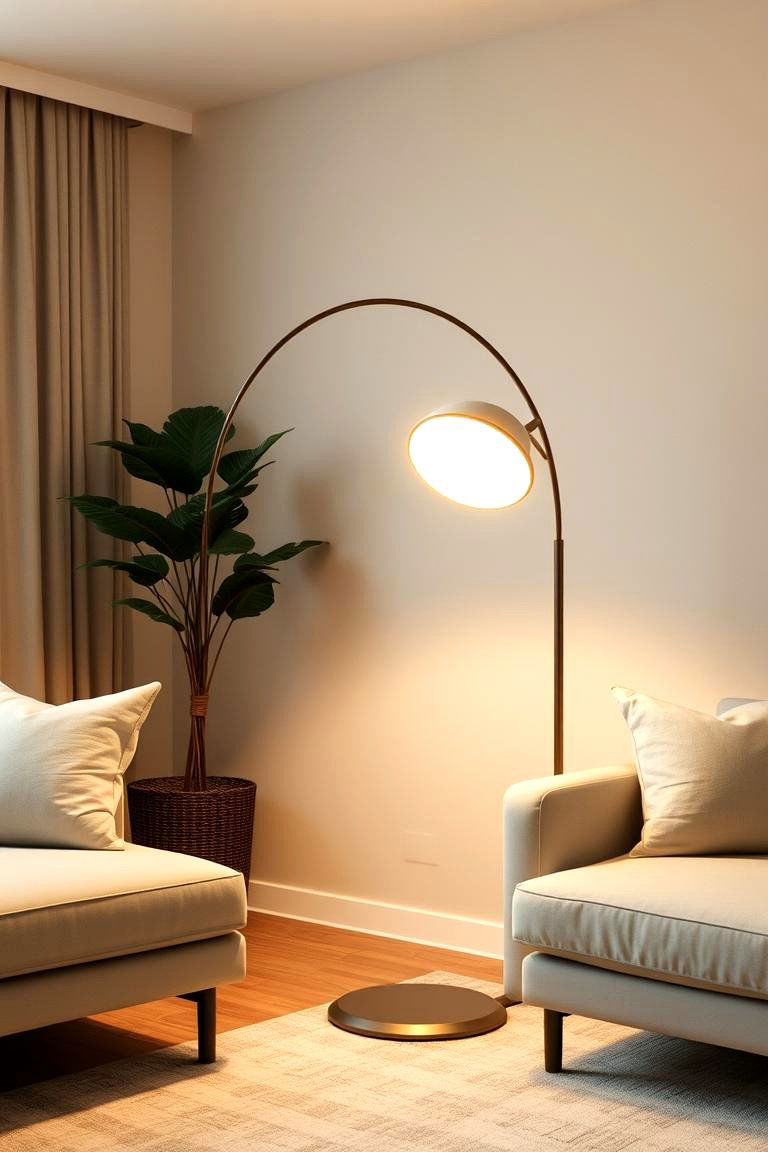
Lighting in the 1950s was designed to make a statement. Sculptural floor lamps, often with slender, dramatic arcs or bulbous shades, became centerpieces in living rooms. These lighting pieces not only provided practical illumination but also served as artistic features. A well-placed floor lamp can elevate the ambiance of your room, casting warm, inviting light and adding a touch of vintage sophistication.
7. Open Shelving for Display and Storage
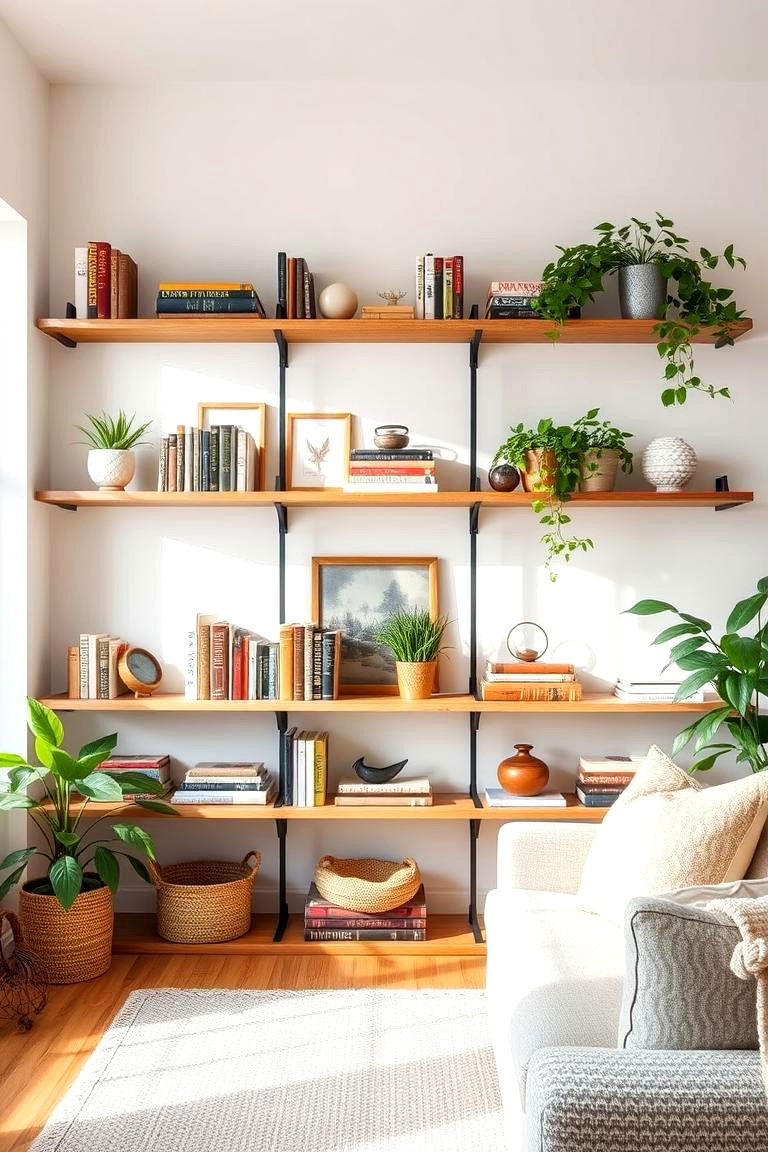
Open shelving was a popular choice in 1950s living rooms, offering an opportunity to showcase books, decorative items, and collectibles. This practical yet stylish storage solution allowed for a sense of openness and flow in the space. Instead of hiding items away in closed cabinets, open shelving encouraged the display of personal treasures, adding personality and warmth to the room.
8. Incorporating Metallic Finishes
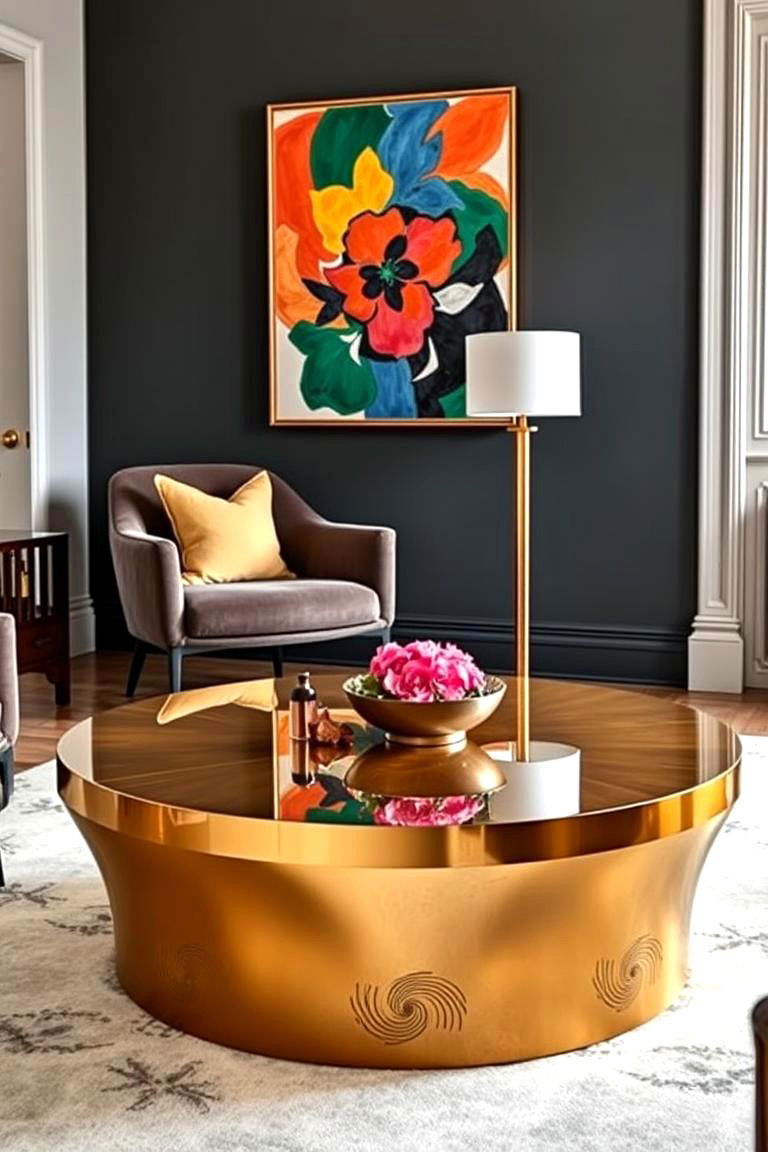
Incorporating metallic finishes into furniture or decor was a quintessential 1950s style choice. Brass, chrome, and gold accents were often used in everything from coffee tables to light fixtures. These metallic touches added a glamorous, modern edge to otherwise simple furniture, creating an elevated yet accessible atmosphere. Small metallic details can help to bring a sense of sophistication to your living room without overwhelming the space.
9. Curved and Oval Furniture Shapes
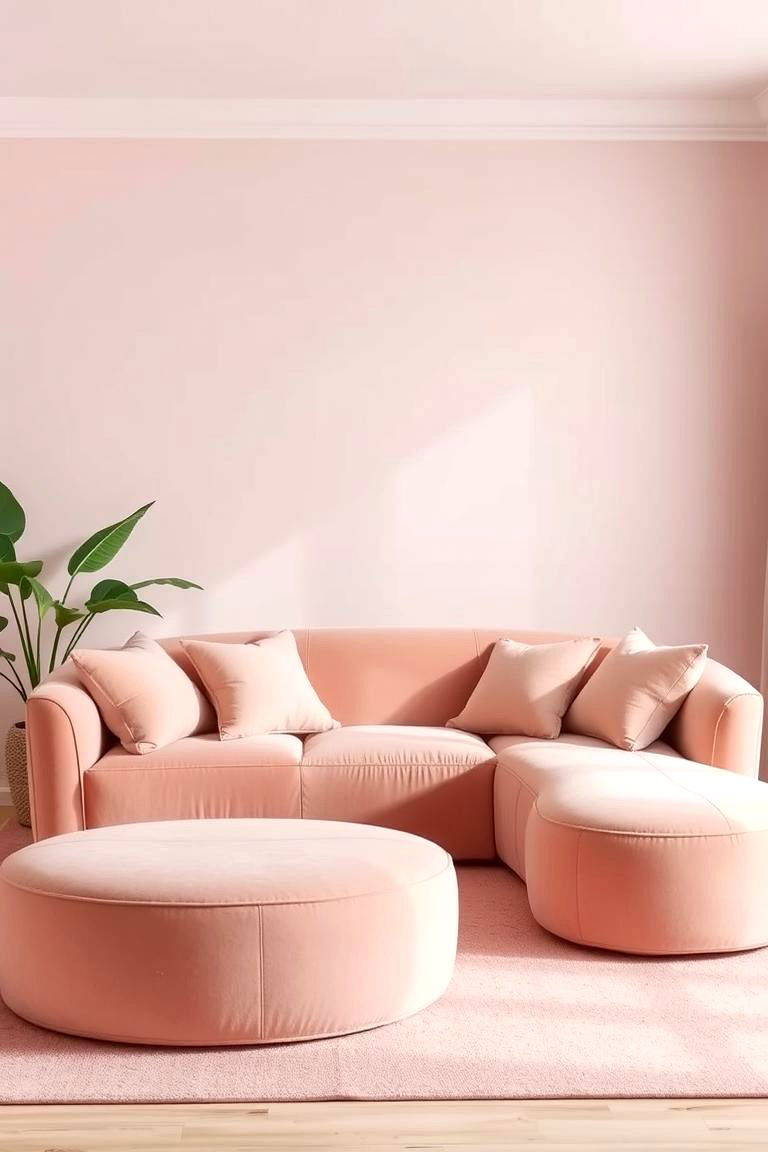
Curved and oval furniture shapes began to gain popularity during the 1950s, offering a softer, more inviting aesthetic. Sofas, chairs, and coffee tables with rounded edges contrasted sharply with the sharp angles of previous design styles. This subtle curve softened the overall look, making the room feel more welcoming. Incorporating these shapes into your living room adds a touch of elegance and flow, enhancing the overall comfort of the space.
10. Large Windows for Natural Light
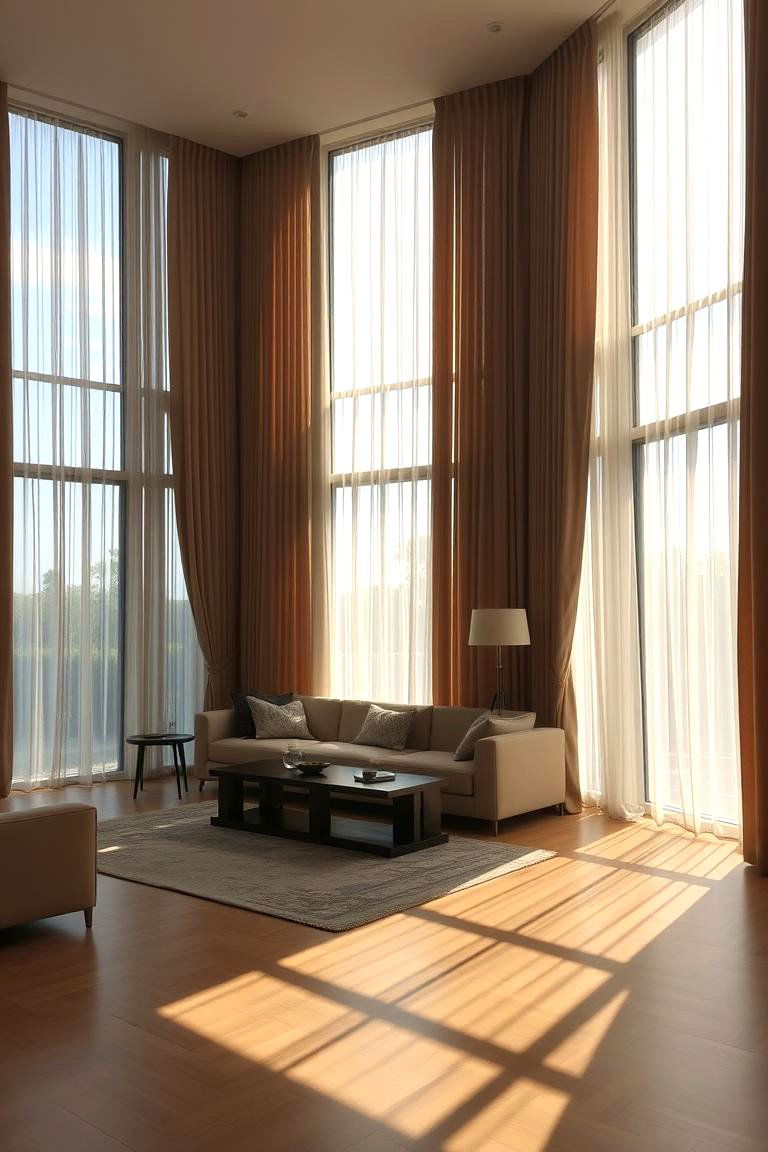
Large, expansive windows were a hallmark of 1950s homes, bringing in abundant natural light. This design choice not only helped to illuminate the space but also blurred the line between indoor and outdoor environments. If you have the luxury of big windows, framing them with sheer curtains can allow the light to flood in while providing a bit of privacy. Maximizing natural light can create a vibrant and welcoming atmosphere in your living room.
11. Accent Chairs in Bold Prints
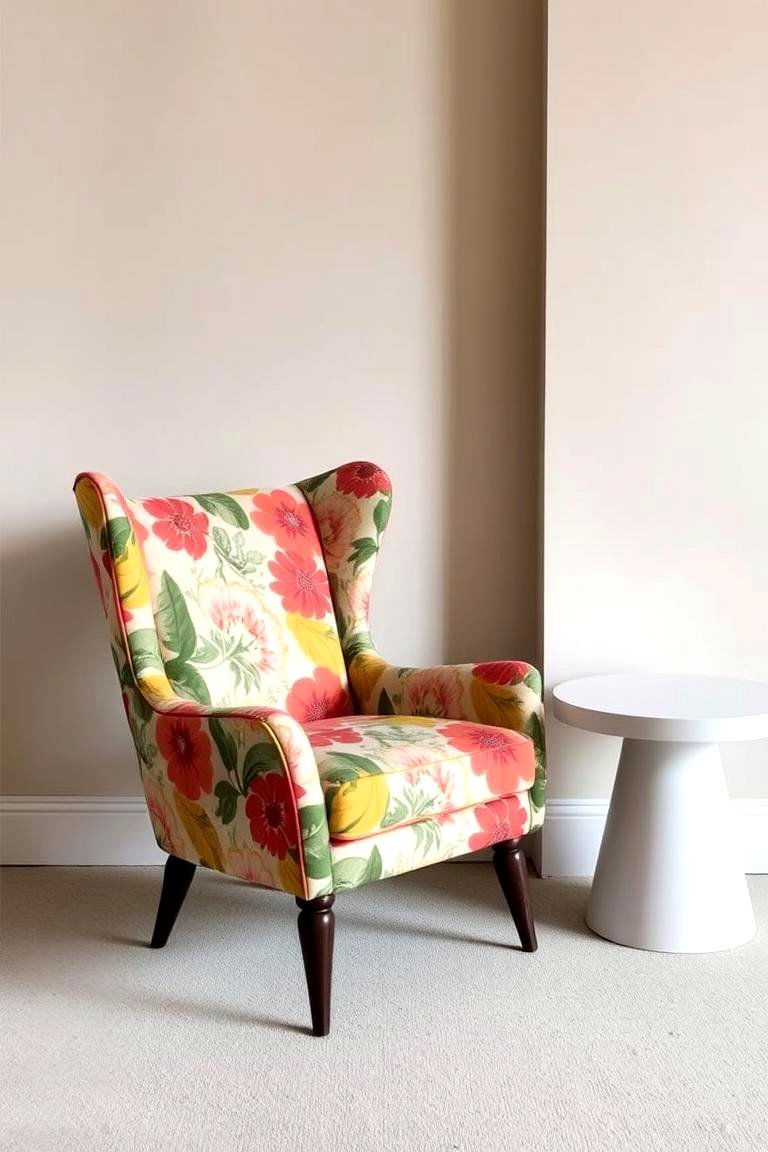
Accent chairs in bold prints or vibrant colors were often used to add contrast and personality to the living room. These chairs didn’t just serve as additional seating but were statement pieces in their own right. Whether with abstract patterns or floral designs, these chairs could be paired with neutral tones in the rest of the room, allowing them to shine without overwhelming the space.
12. Art Deco-Inspired Decor
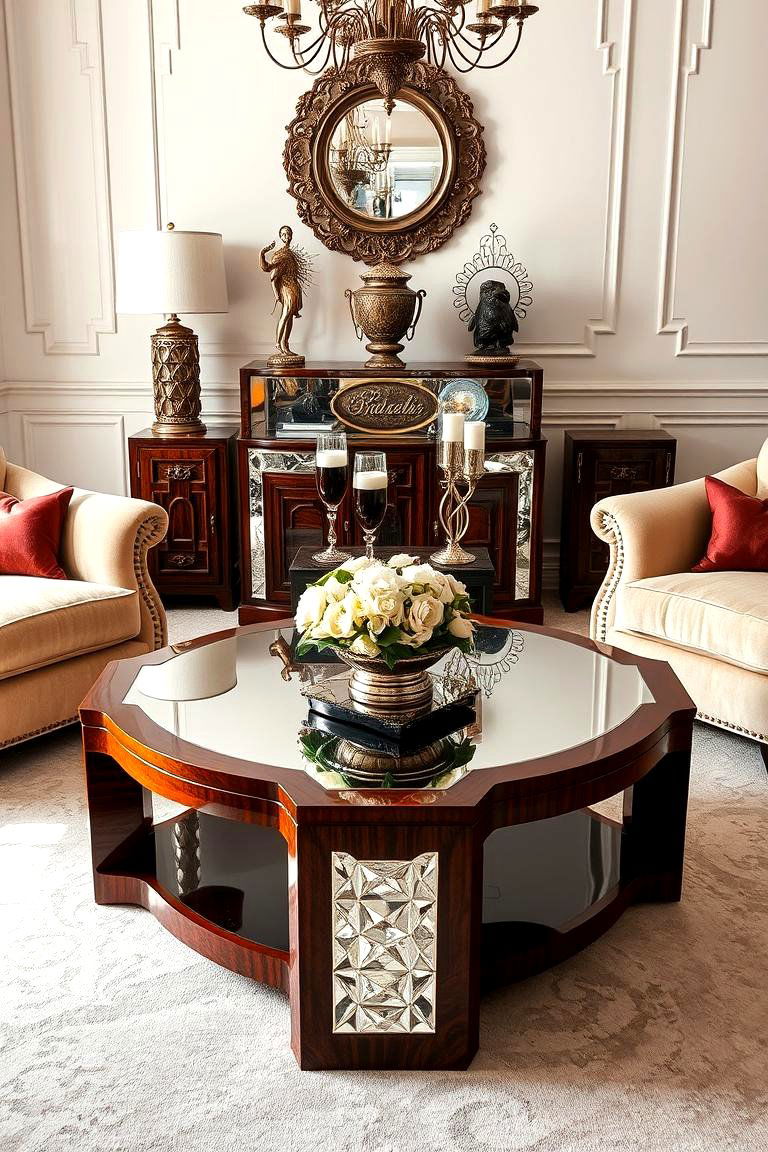
While Mid-Century Modern ruled the 1950s, Art Deco influences were also visible, especially in living room design. Sleek, polished furniture pieces were paired with luxurious finishes like lacquered wood, mirrored surfaces, and velvet cushions. The art deco aesthetic combined glamour with geometric precision, creating a dramatic effect. Integrating these pieces into your living room adds an element of elegance and timelessness.
13. Layered Textures with Throw Blankets and Pillows
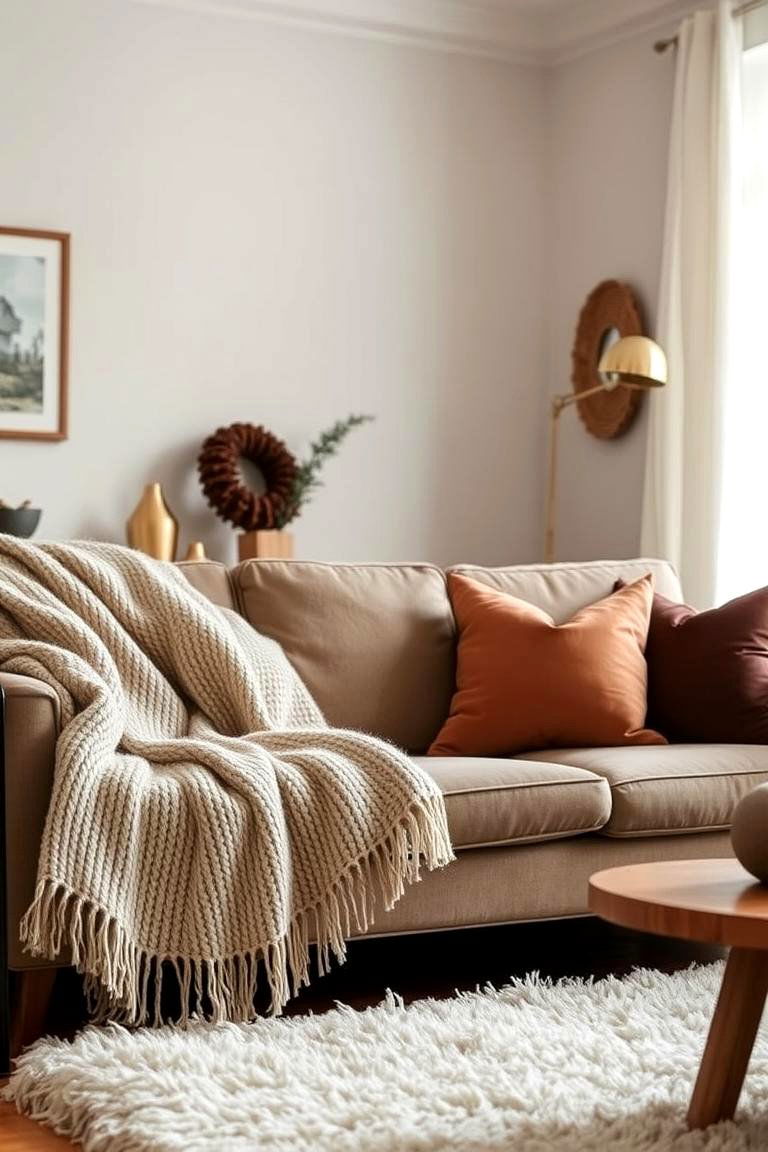
Layering different textures was key to creating a comfortable and visually interesting 1950s living room. Throw blankets in soft materials like wool or cashmere, combined with textured pillows, created an inviting space. Mixing different fabric types—such as leather, velvet, and linen—adds dimension and warmth to the room, making it feel cozy yet stylish.
14. Wall-Mounted TV and Media Consoles
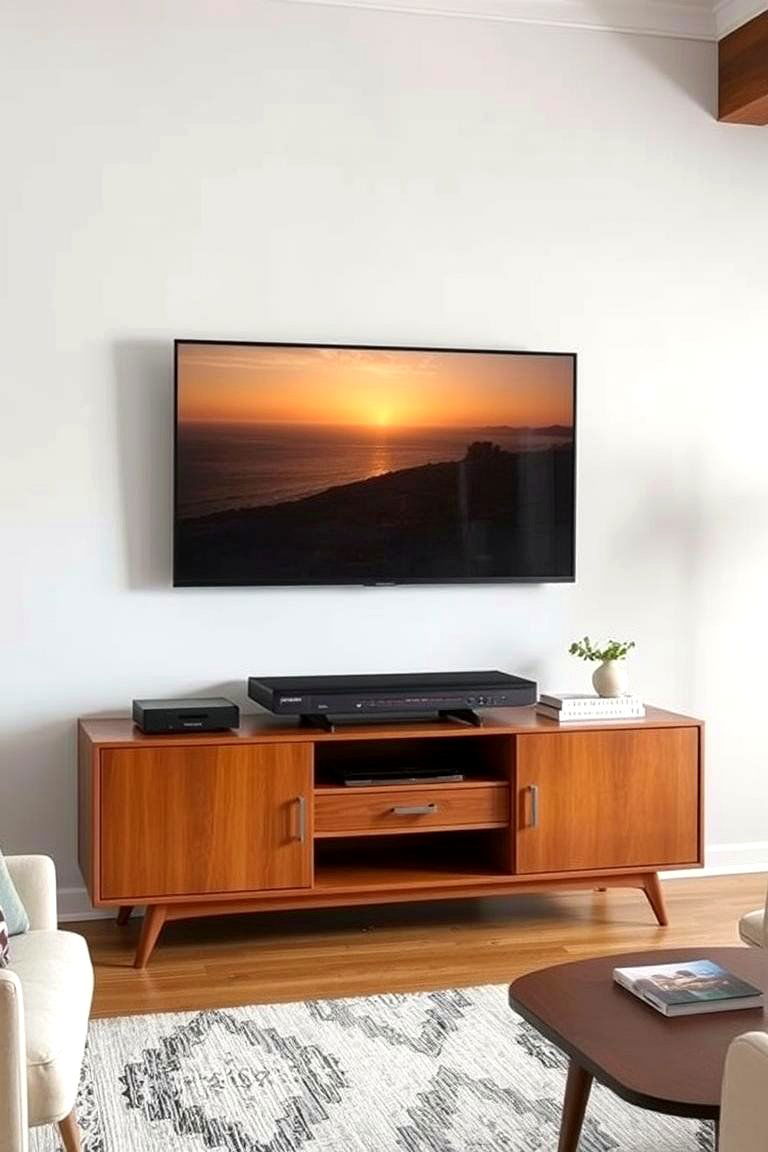
The rise of television in the 1950s meant that living rooms began to adapt to accommodate this new technology. Wall-mounted TVs and media consoles became central features, keeping the space functional and neat. These innovations allowed the living room to serve as both an entertainment hub and a space for relaxation, blending form and function seamlessly.
15. Indoor Plants and Greenery
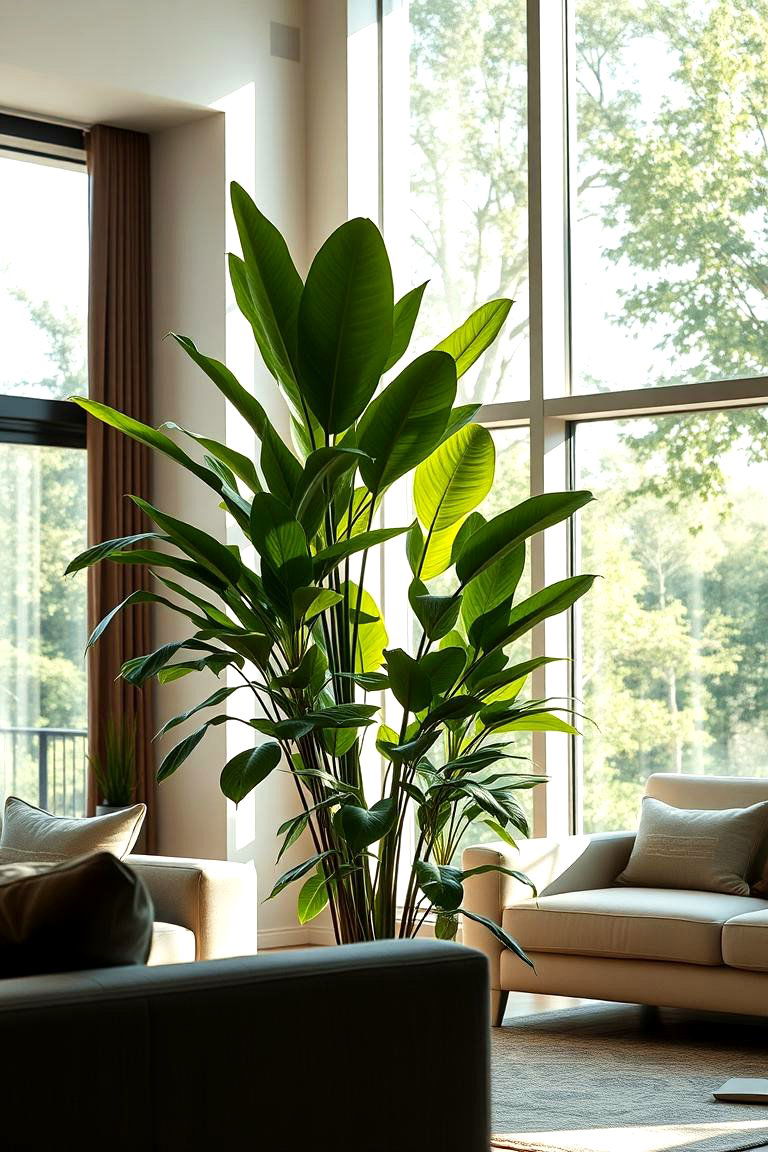
Indoor plants were a popular addition to 1950s living rooms, bringing a touch of nature indoors. Whether it was large potted plants like rubber trees or small cacti, greenery added color and life to the room. Plants also had a way of softening the more rigid, geometric furniture, creating a balanced and harmonious environment.
16. Low-Profile Sofas and Chairs
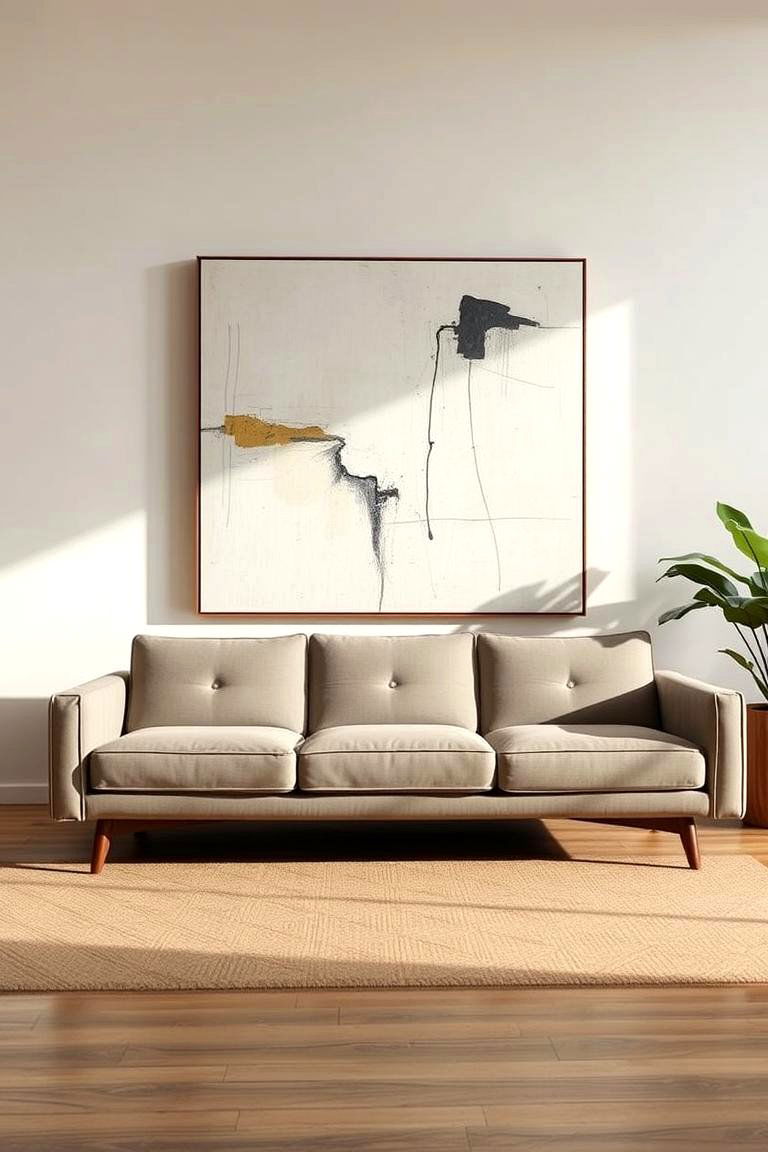
Low-profile sofas and chairs were commonly used in 1950s living rooms, in line with the minimalist aesthetic of the time. These low, sleek pieces provided a comfortable seating area while maintaining the open, airy feel of the room. When choosing furniture, opting for these low-profile pieces can help you create an unobtrusive, modern look that feels expansive and effortless.
17. Use of Bold and Abstract Art
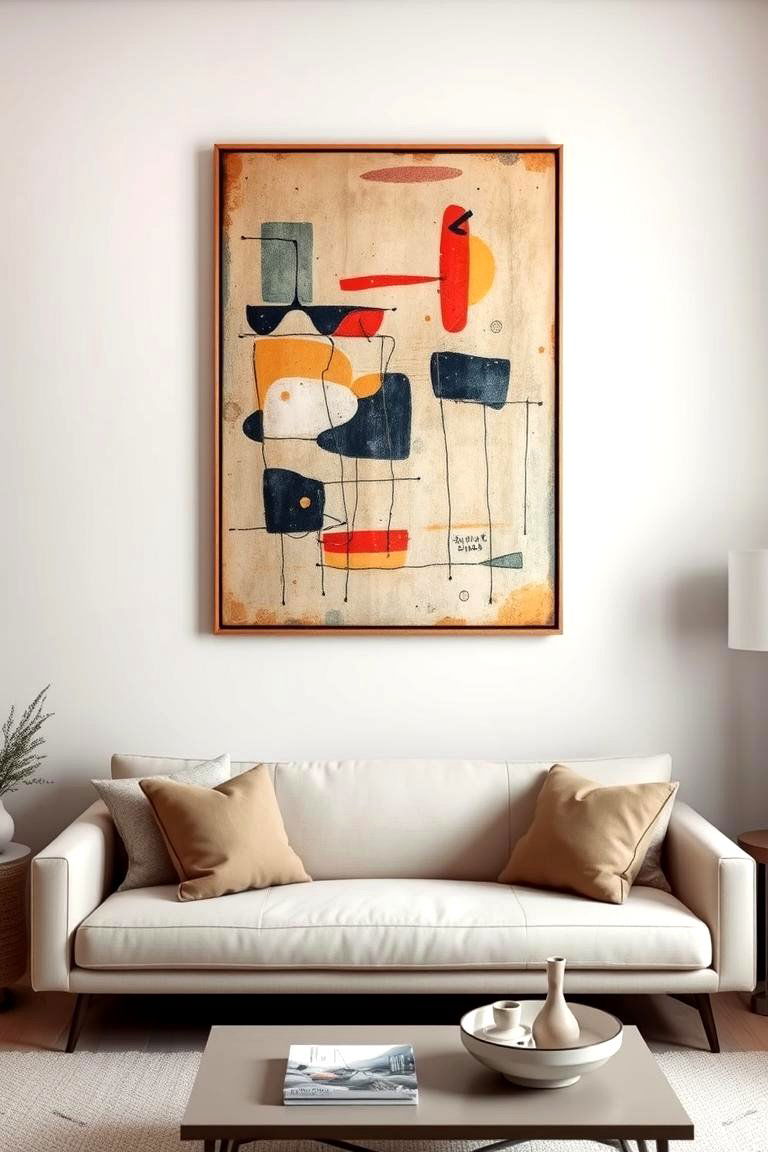
Abstract art was widely used in 1950s living rooms, reflecting the era’s focus on self-expression and modernism. Large, bold paintings or sculptural pieces created dynamic focal points on the walls. Whether through vibrant colors or abstract forms, the art served as both decoration and a conversation starter. Adding a piece of abstract art can inject personality and creativity into your living room.
18. Use of Patterned Upholstery
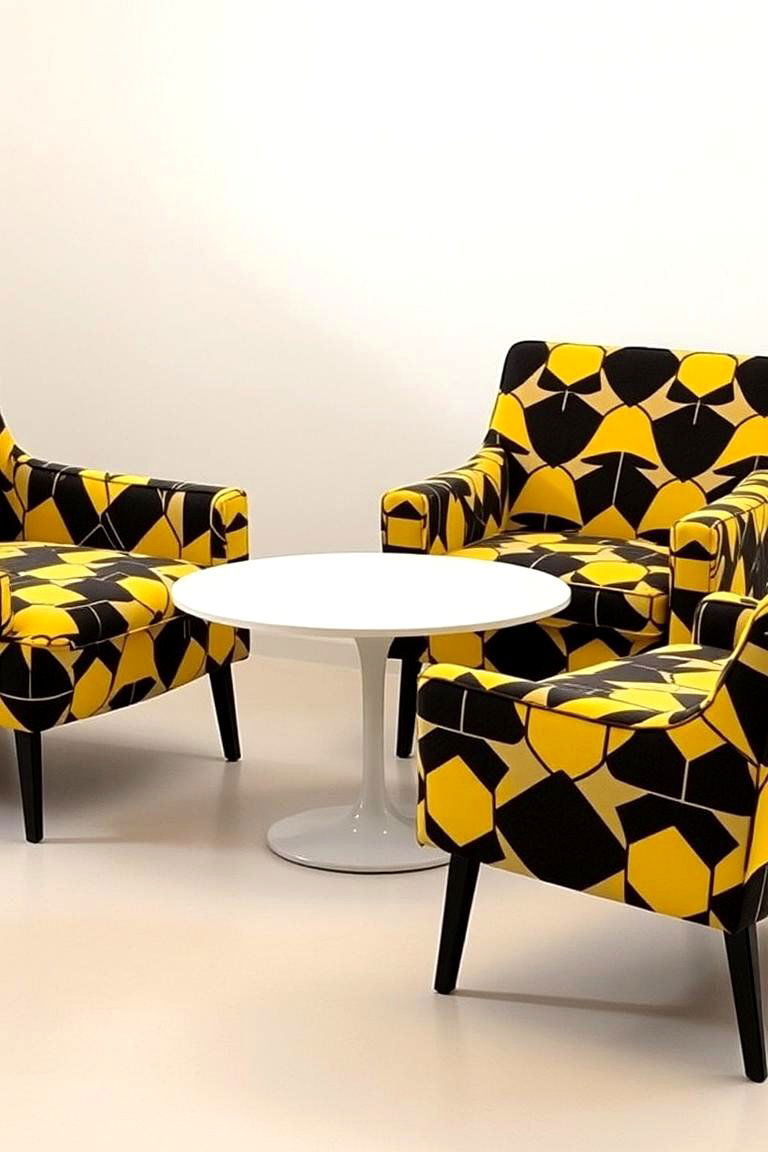
Patterned upholstery was a popular choice for furniture in the 1950s. From floral designs to intricate geometric shapes, the fabrics used on sofas and chairs added texture and visual interest. These patterns provided a playful contrast to the more streamlined shapes of the furniture. Integrating patterned upholstery into your living room brings a nostalgic yet fresh touch to the space.
19. Vintage Accents: Telephones and Radios
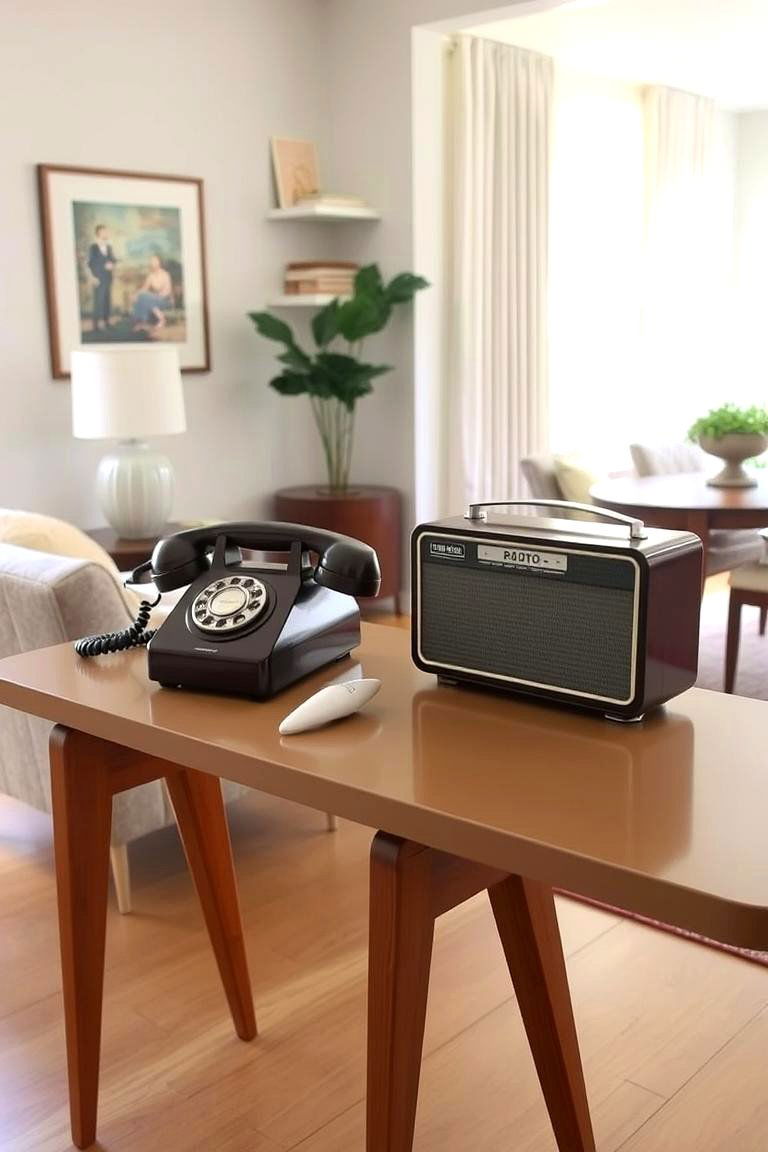
Incorporating vintage accents like rotary phones and radios adds a nostalgic touch to any 1950s-inspired living room. These functional yet stylish pieces serve as conversation starters and transport the room back to a time of innovation. While technology has advanced, these vintage pieces add character and authenticity to your design.
20. Floating Shelves for Minimalist Appeal

Floating shelves were another feature that gained popularity in the 1950s. These shelves provided a minimalist way to store and display books and decor without taking up too much space. The absence of visible hardware allowed the shelves to “float,” creating a clean and modern aesthetic. This design choice emphasizes function while contributing to a tidy and uncluttered living room.
21. Soft and Inviting Lighting Fixtures
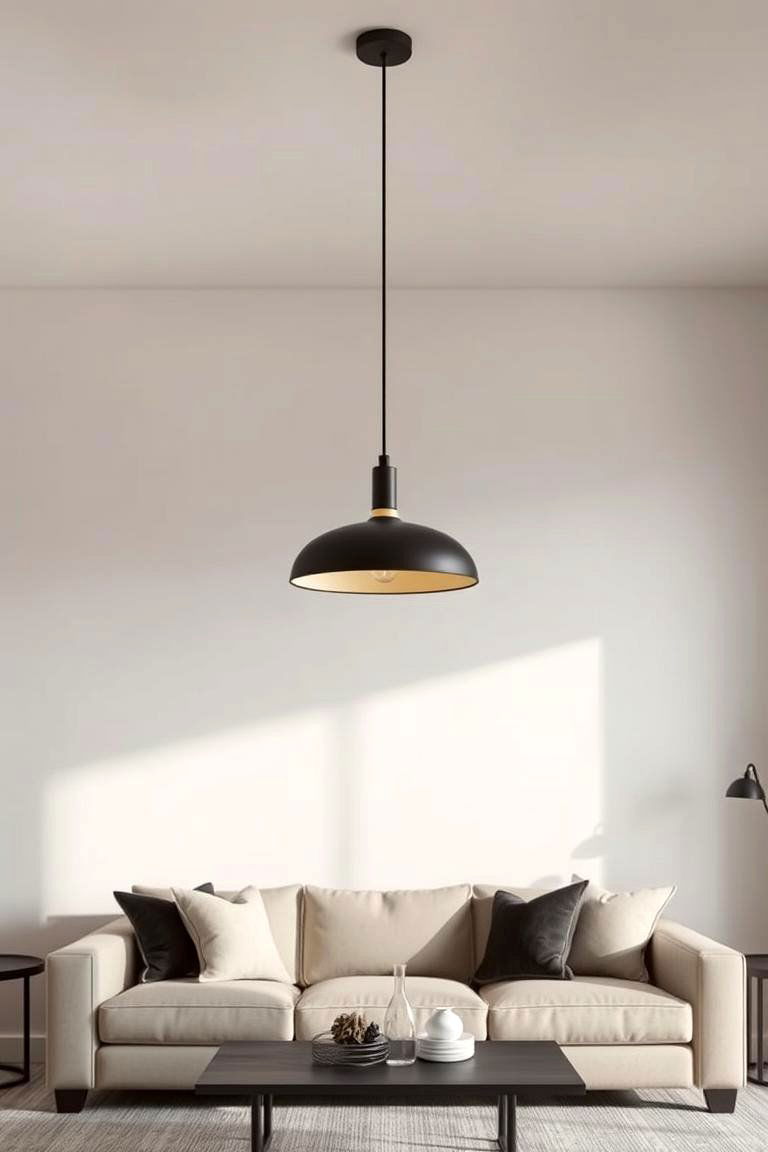
Lighting in the 1950s was designed to be soft and inviting, with fixtures that created an atmospheric glow rather than harsh light. Pendant lights, chandeliers, and sconces with frosted glass were often used to diffuse the light and add warmth to the room. A well-chosen lighting fixture can dramatically change the mood of the room, making it feel welcoming and cozy.
22. Vintage Bar Carts and Cocktail Tables

The 1950s were also known for their love of entertaining, and a vintage bar cart or cocktail table was often an essential piece in living room decor. These stylish furniture pieces not only served a practical purpose but also added flair to the space. A well-stocked bar cart with vintage glassware can create an old-school atmosphere, perfect for hosting guests.
23. Wall Art and Mirrors to Open Up the Space
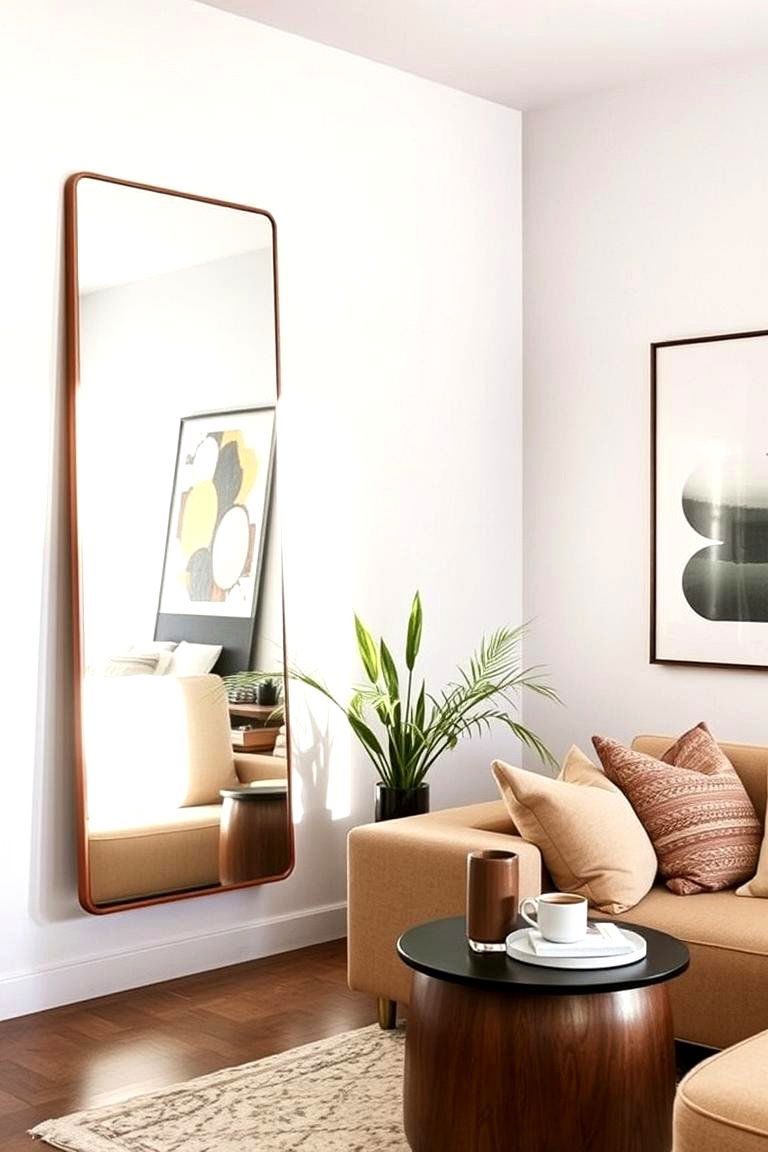
Mirrors and wall art played a significant role in 1950s living rooms, especially in smaller spaces. Large mirrors helped to reflect light and make the room feel larger and more open. Paired with carefully chosen wall art, they added depth and style to the room. Using mirrors strategically can visually expand the space and give it a more inviting feel.
24. Brightly Colored Accent Walls
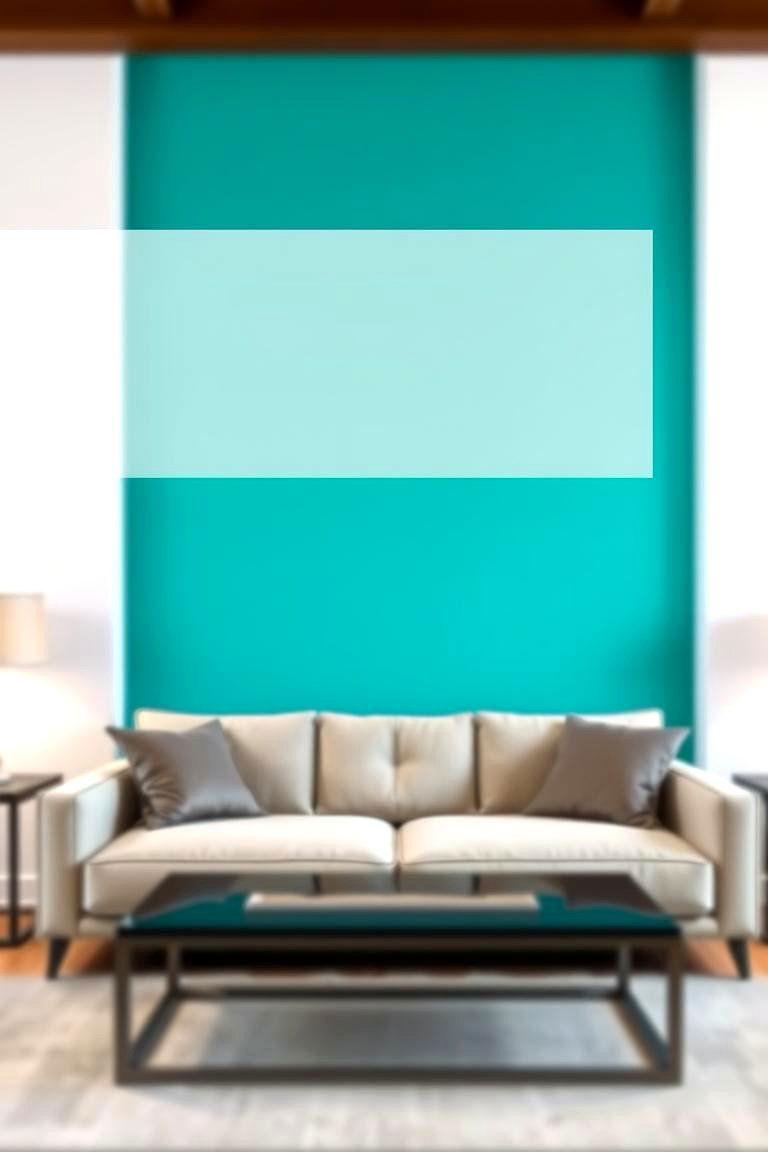
Brightly colored accent walls were all the rage in the 1950s, offering a way to introduce bold colors into the living room without overwhelming the entire space. Walls painted in deep blues, vivid greens, or striking oranges created focal points and energized the room. Accent walls give you the freedom to express personal style while keeping the overall atmosphere balanced.
25. Retro-Inspired Vinyl Furniture
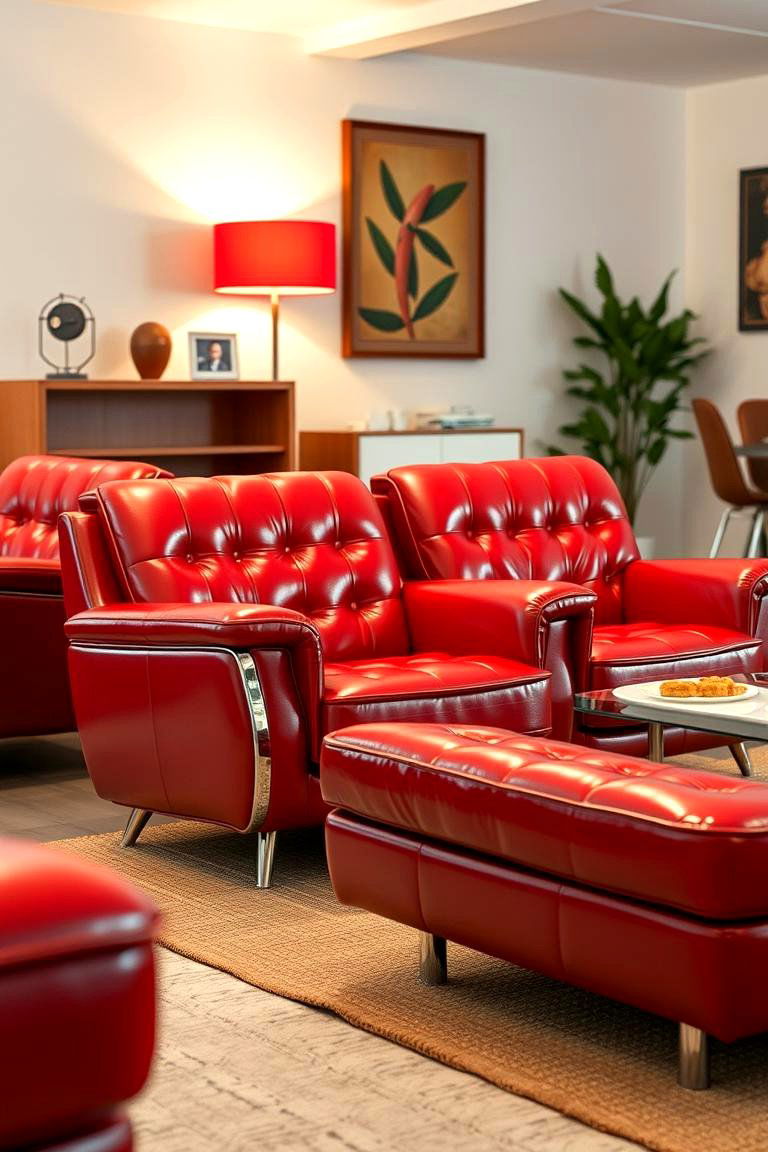
Vinyl furniture was a defining feature of the 1950s, offering both style and durability. Upholstered in shiny, bright vinyl, chairs and sofas became focal points of the living room. This material’s smooth texture and sleek appearance fit perfectly with the period’s modern aesthetic. Integrating vinyl furniture into your space can bring a touch of retro charm with a contemporary twist.
26. Minimalist Fireplace Designs
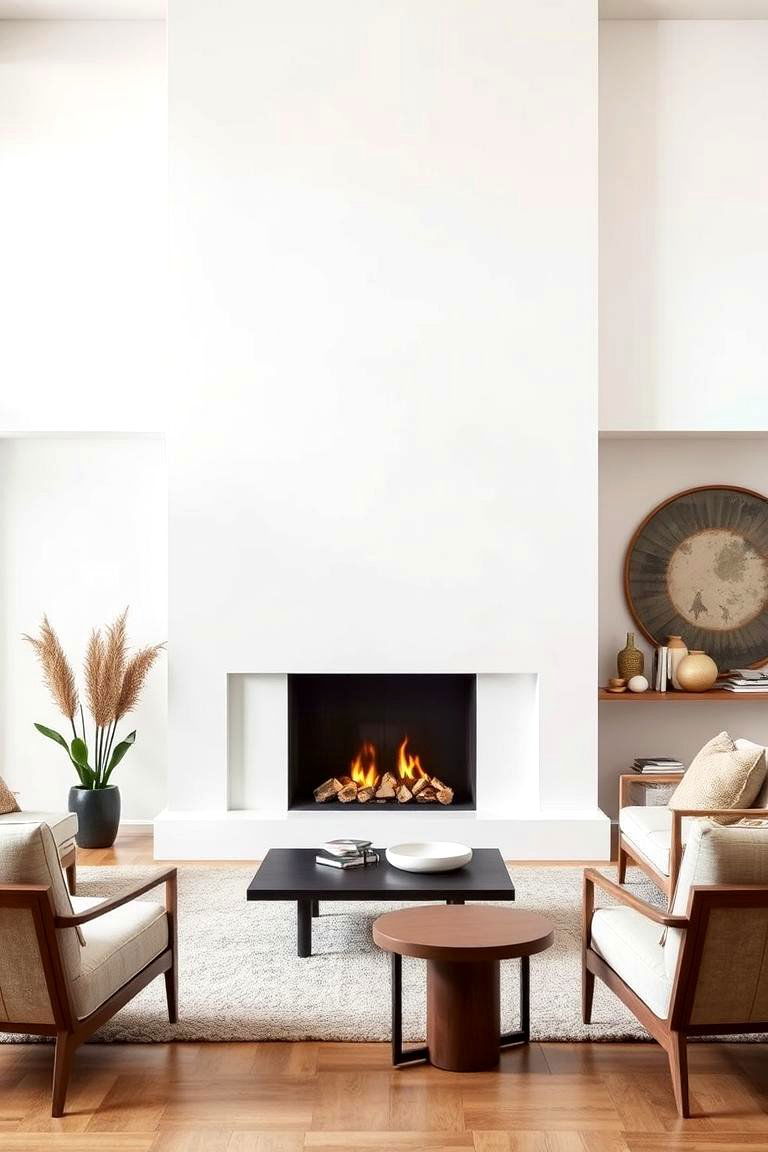
In the 1950s, fireplaces became more minimalist in design, with clean, straight lines and simplified shapes. The focus was on functionality, but these fireplaces still served as a focal point in the living room. By opting for a sleek, modern fireplace, you can create a cozy atmosphere without the heavy, ornate design often found in traditional models.
27. Bold Tile Designs for Floors
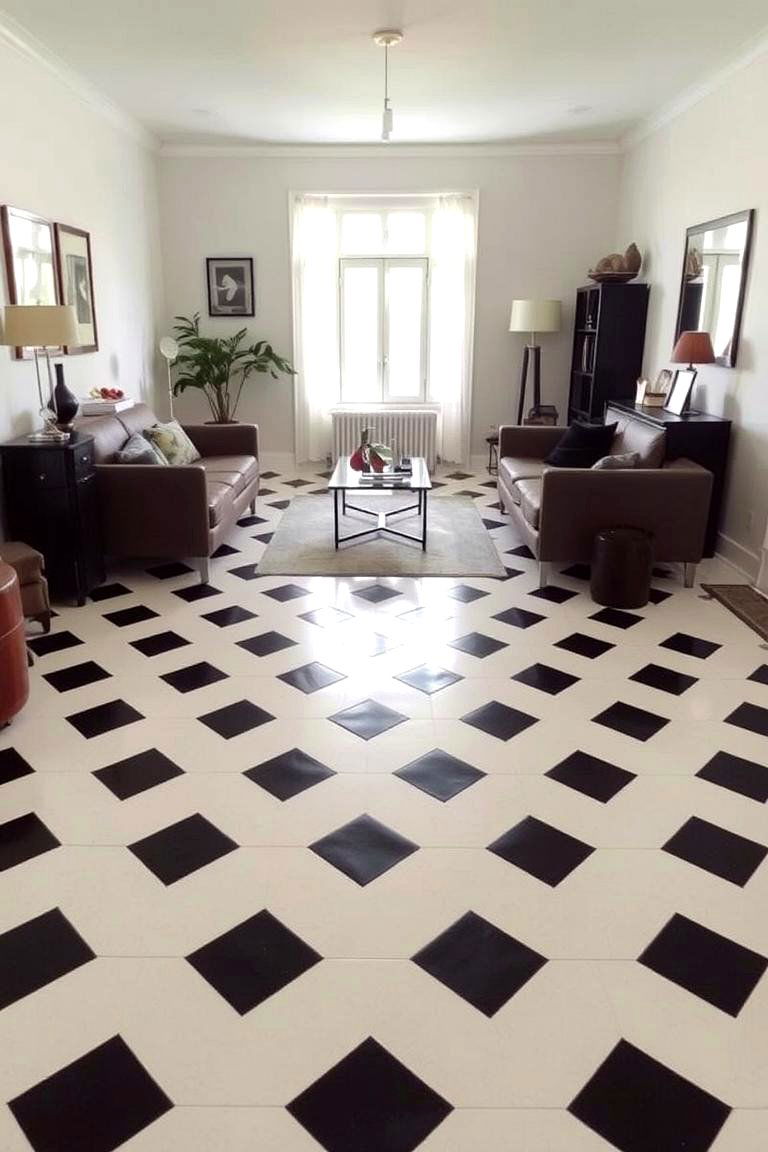
Bold tile designs were often used in the 1950s, especially for flooring. Geometric patterns and vibrant colors were integrated into the flooring to make a statement. These bold tiles offered a way to add personality and uniqueness to the living room without overwhelming the overall design. By using eye-catching tiles, you can set the tone of your space while maintaining an element of style.
Conclusion:
The 1950s were a remarkable time in design, offering a blend of bold colors, innovative furniture, and timeless elements that continue to inspire today. Whether you’re aiming for a full retro makeover or just looking to incorporate a few pieces into your existing decor, there are endless ways to infuse your living room with 1950s charm. From geometric patterns to luxurious materials, the era's designs offer versatility, style, and practicality. Take inspiration from these 27 ideas to transform your living room into a vibrant, welcoming space that reflects both nostalgia and modern elegance.


